Music for films (Part 1)

History of music in the Silent and Early Sound Movies (Part 1)
 Long before the dawn of civilization, people had discovered the power and the necessity of the addition of sound in a performance. No magician-doctor would cure a patient simply by looking silently at the stars and no headman of tribe would bring the rain merely by looking at the sky. On the contrary, they were sounding rattles, they were dancing, shouting and singing. Because even those people knew, instinctively of course, that the sound, when it is combined with pictures, imposes a psychological state on the receiver which helps him deeper believe or better understand what is happening around him.
Long before the dawn of civilization, people had discovered the power and the necessity of the addition of sound in a performance. No magician-doctor would cure a patient simply by looking silently at the stars and no headman of tribe would bring the rain merely by looking at the sky. On the contrary, they were sounding rattles, they were dancing, shouting and singing. Because even those people knew, instinctively of course, that the sound, when it is combined with pictures, imposes a psychological state on the receiver which helps him deeper believe or better understand what is happening around him.
The combination of sound (music, speech, sound effects) and pictures has created throughout the centuries an amazing kaleidoscope of art forms, the major representative being - as far as live performances are concerned - the theatre.
Even sound effects are rooted in ancient times. Inscriptions of the ancient Greek period describe a method for the reproduction of the sound of thunder in tragedies. Similar methods have been used in the Elizabethan productions of Shakespeare’s plays and in the Japanese theatre Kabuki.
Music, on the other hand, has been established in the theatre since the ancient Greek period. Centuries later, the opera introduced new ways of expression, whilst giving the primary role to music and placing the speech and setting second.
From all the above, we can see that music and drama have always shared a close relationship. Thus, when the moving image was discovered and the silent movies were born, (with the discovery of the moving image and the birth of the silent movies) it would be only natural for music to be used to accompany the action and to add levels of expression to the visual part.
But, is it really so?
There are several theories concerning the reasons why music was chosen to accompany silent films. The first one belongs to the composer Hanns Eisler who, in his book Composing for the films, says:
Ever since they were born, films have been accompanied by music. The silent picture in itself would generate a sense of ghosts, similar to the game of shadows. Besides, the shadows and the ghosts have always been correlated.
The magical function of music was to smoothen this sense of fear. A need was created to blunt the displeasure that the spectator felt when he saw human simulacra acting, feeling, and even talking, while at the same time remaining silent.
The fact that the spectator would see dead simulacra - shadows of living people on the screen was creating the sense of ghosts; the music was introduced not to supply the characters with the life they were lacking (since this would only intensify this sense), but to exorcise the fear and to help viewers overcome the initial shock. After all, it is not accidental that silent films wouldn’t use hidden actors who, in the course of the screening, would provide the dialogues, whereas instead, there would always be music which, in effect, would very often have nothing to do with what was happening on the screen.

Leopoldo Fregoli
An exception to this rule is the Italian comedian Leopoldo Fregoli who, in 1898, shot a series of comedies and who, during the screening, would stand behind the screen and act as a prompter.
Also, in Japan, instead of dialogue flashcards, they would use a charismatic actor who would perform all the characters - men, women, children - would enact all the sound effects and sounds and would sing or play an instrument, thus providing the musical background. Those admirable people were called Bensi and they enjoyed such popularity, that, very often, the people would go to the cinema just for them, regardless of which film was on. Unfortunately, the discovery of speaking films led to a progressive disappearance of the Bensi art.
Another point view comes from Kurt London who, in his book Film Music, says that the use of music in the cinema does not derive from any artistic or psychological need, but from purely practical reasons and, more specifically, from the bad acoustic conditions of the screening. He specifically states that the projectors at the time were so noisy that a need was created for their noise to be covered by something pleasant; the owners of the theatres instinctively chose music as the most suitable solution.
The most interesting observation, however, comes from London who notes that:
... aesthetically and psychologically, the most important reason for the existence of music in the cinema is, undoubtly, the film rhythm as a kinetic art.
We are not used to perceiving movement as an art form, unless it is accompanied by sounds or at least by acoustic rhythms.
Every film should dispose of a rhythm which would determine the form.
The role of music was to give sound depth and tone to the form and to the inner rhythm of the film.
In my opinion, of all the above stated theories, the last one touches more the unique relationship between the silent movies and music.

The first known use of music on the cinema occurred on the 28th December 1895, when the Lumiere family tested the commercial value of their first films. The screening took place at the Grand Cafe in Boulevard de Capucines, in Paris, and was accompanied by a piano.
At this point, we must make a note, namely that, when we talk about music in silent films, we obviously talk about a live performance which occurs during the screening. What is more, most of the times, there wasn’t even a set music. For this reason, a pianist with a great capacity for improvisation was invaluable.
The first presentation of the Lumiere program in England took place on the 20th February1896. By April of the same year, orchestras would accompany films in several London theatres.
During the first years of commercial cinema the music material used consisted of almost anything that was available at the time and, most of the times, it would bare very little - if any - relation to the on-screen action. The music pieces that were performed were selected by the owner of the theatre and the conductor of the orchestra.
While the cinema was discovering its potential, a desire was born on the part of the most sensitive producers to provide each film with its own music. This idea was materialized for the first time in 1908, when the French company Le Film d’Art encouraged famous actors to make into film some of the most known works in their repertoire. The Comedie Francaise and the Academie Francaise supported this idea and together they started the production of the film L’Assassinat du Dur de Guise. However, the most important incident was that the known composer Camille Saint Saens composed music especially for the film. This music was later converted into the Concerto Opus128 for strings, piano and harmonium. For various reasons, however, one of which was the additional cost, this idea was not generally widespread.
In 1909, a year after Saint Saens score, Edisons Film Company started distributing special suggestions on music for the films that it produced. By 1913, orchestras and theatre pianists had the opportunity to be supplied with music for specific dramatically purposes, which could be found in special catalogues. The most known example is Giuseppe Becce’s Kinobibliotek (or Kinothek) which was first published in Berlin in 1919. The music pieces in Becce’s Kinotech were registered according to their style and the sentimental load that their hearing would presumably cause, while most of them were compositions of Becce himself.
Some of the categories under which the pieces were placed can be seen in the example below, which is taken from Becce’s book Handbook of Film Music.
DRAMATIC CLIMATE
1. CLIMAX
a) destruction
b) dramatic agitato
c) serious atmosphere
d) mysterious nature
2. TENSION MYSTERIOSO
a) night: bad disposition
b) night: threatening disposition
c) innocent agitato
d) magic - ghost
e) something is about to happen
3. TENSION AGITATO
a) pursuit
b) flight
c) heroic battle
d) battle
e) weariness, fear
f) upset masses - agitation
g) hostile nature - thunderstorm - fire
4. CLIMAX APPASSIONATO
a) desperation - despair
b) lament
c) heat, upheaval
d) panegyric
e) triumphant
The above mentioned categories were subdivisions of the three main categories which were:
- Nature
- State and Society
- Church and State
Yet, the most crude form of the idea of musical categorization and music catalogues was materialized by Max Winkler. Winkler thought that within classical music there is such an abundance of pieces that, should they be divided in categories in proportion to the, by now famous, Becce’s Kinothek, there would practically be music ready for whichever scene of whatever film. This idea appealed to the director of Universal Film Company at the time, Paul Gulick, who hired Winkler. So, Winkler watched these films before they were distributed, provided the theatre with a catalogue of classical extracts and instructions about the scenes over which they would be played. Thus, works by Beethoven, Mozart, Grieg, J.S. Bach, Verdi, Bizet, Tchaikovsky, Wagner and, in general, anything that wasn’t protected by copyright were literally massacred.

Winkler himself reports that:
J.S. Bachs immortal chorales became Adagio Lamentoso for sad scenes. Parts of great symphonies were cut and appeared as Sinister Materioso by Beethoven, or Strange Moderato by Tchaikovsky. Wagner’s and Mendelssohn’s wedding marches were used for weddings, rows between husbands and wives and divorce scenes. If they were used for the ending, their tempo would become higher, so that they would give the sense of a happy end. Meyerbeer’s Coronation March was slowed down so much that it would provide a pompous musical background for the condemned to death prisoners.
Luckily, Winkler’s luck and his idea didn’t last long
To be continued.....
© 1997 George Wastor
revised 2020
To άρθρο δημοσιεύτηκε αρχικά το 1997 και βραβεύτηκε από το Γαλλικό περιοδικό Diapason ως ένα από τα 10 καλλίτερα άρθρα στον κόσμο αναφορικά με την μουσική του βωβού κινηματογράφου. Έχει μεταφραστεί στα Ελληνικά, Αγγλικά, Ιταλικά, Γαλλικά και Πορτογαλικά, έχει εκδοθεί από τον οίκο Mc-Graw Hill New York, και χρησιμοποιείται ώς ύλη αναφοράς στo Film Music Department των University of Pennsylvania-PENN (USA), University of Sao Paolo (Brazil), Laval University (Canada).
Μεταφράστηκε για πρώτη φορά στα Ελληνικά το 2020 για λογαριασμό του Music Accessories όπου και δημοσιεύεται κατ αποκλειστικότητα.


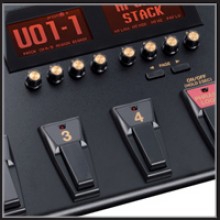

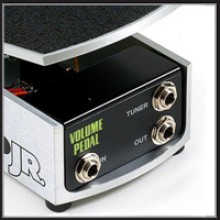
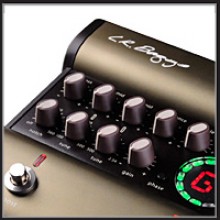

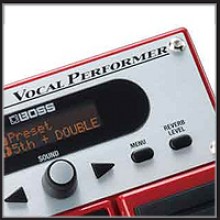
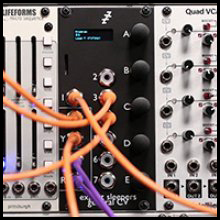




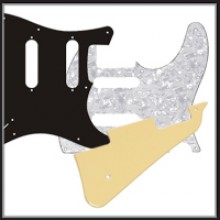


















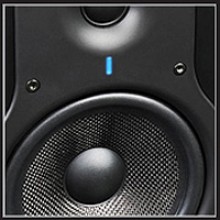
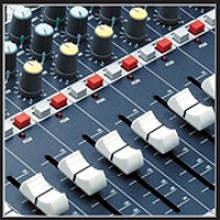


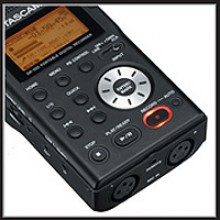








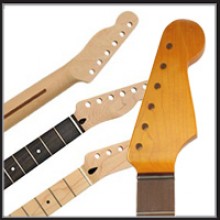
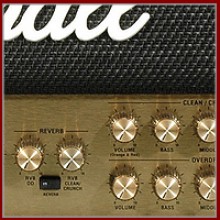
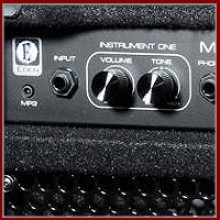


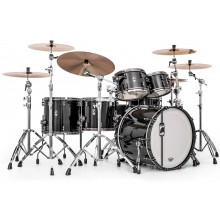


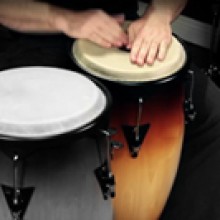
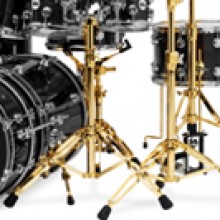
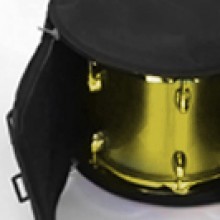

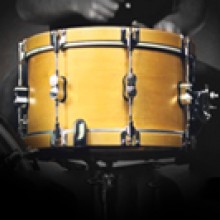
353 Comment(s)
Άφωνος!!! Μαγικό!!! Ευχαριστούμε πολύ και αναμένουμε τη συνέχεια!!!
Σε ευχαριστώ πολύ για τα καλά σου λόγια. Το δεύτερο μέρος είναι ήδη έτοιμο και θα ανέβει σύντομα πιστεύω.
Finally I found this article. Been looking for it for a while, I couldn’t find it using Google
I was just searching for this information for a while. After six hours of continuous Googleing, at last I got it in your website. I wonder what is the lack of Google strategy that don’t rank this type of informative web sites in top of the list. Generally the top websites are full of garbage.
Amazing blog! Do you have any suggestions for aspiring writers? I’m hoping to start my own site soon but I’m a little lost on everything. Would you suggest starting with a free platform like WordPress or go for a paid option? There are so many options out there that I’m completely overwhelmed .. Any ideas? Appreciate it!
I definitely organized my thoughts through your post. Your writing is full of really reliable information and logical. Thank you for sharing such a wonderful post. 우리카지노
You produced some decent points there. I looked online for the problem and located most individuals goes in conjunction with with the site.
Greetings! This is my first visit to your blog! We are a team of volunteers and starting a new project in a community in the same niche. Your blog provided us beneficial information to work on. You have done a marvellous job!
It is amazing and wonderful Many people will get many benefits by reading this type of information.
This is a really nice platform to shares your blogs and multiple posts. i impressed with this.
Thanks for sharing this text. The substance is genuinely composed.
Very interesting information!Perfect just what I was looking for!...This is truly a great read for me. I have bookmarked it
Wonderful blog! I found it while browsing on Yahoo News. Do you have any tips on how to get listed in Yahoo News? I’ve been trying for a while but I never seem to get there! Cheers
Wonderful blog! I found it while browsing on Yahoo News. Do you have any tips on how to get listed in Yahoo News? I’ve been trying for a while but I never seem to get there! Cheers
This is a truly awesome admittance. Today coming from msn whilst browsing an identical material. I really had upwards what you were required to go over. Maintain the truly amazing work!
Thank you so much for giving my family an update on this issue on your web-site. Please realise that if a brand new post appears or if perhaps any adjustments occur to the current post, I would be interested in reading a lot more and focusing on how to make good use of those strategies you reveal. Thanks for your efforts and consideration of other people by making this web site available.
<a href="https://Cafe69login.com/" > cafe69 </a>
<a href="https://akunmastercafe69.com/" > akun master cafe 69 </a>
<a href="https://akumaster1cafe69.com/" > akun master cafe 69 </a>
<a href="https://akumaster2cafe69.com/" > akun master cafe 69 </a>
<a href="https://Cafe69gacor.com/" > cafe69 </a>
<a href="https://Cafe69vip.com/" > cafe69 </a>
<a href="https://Cafe69login.com/" > cafe69 </a>
<a href="https://idmasterinternasional.com/" > id master internasional </a>
<a href="https://idmasterinternasional1.com/" > id master internasional </a>
<a href="https://idmasterinternasional2.com/" > id master internasional </a>
<a href="https://webgacor.lol/" > akun master internasional </a>
<a href="https://webgacor.pics/" > ID master internasional </a>
<a href="https://webgacor.autos/" > ID master internasional </a>
<a href="https://webgacor.skin/" > ID master internasional </a>
<a href="https://money138.click/" > money 138 </a>
<a href="https://money138vvip.click/" > money 138 </a>
<a href="https://webgacor.lol/" > server gacor </a>
<a href="https://webgacor.click/" > server gacor </a>
<a href="https://webgacor.co/" > server gacor </a>
<a href="https://linkserverinternasional.lol/" > akun master internasional </a>
<a href="https://linkserverinternasional.biz/" > link master internasional </a>
<a href="https://kcmodernquiltguild.com/" > Cafe69 </a>
<a href="https://linkserverasia.com/" > Server Asia </a>
<a href="https://linkserverinternasional.com/" > SERVER INTERNASIONAL </a>
<a href="https://gacorinternasional.com/" > GACOR INTERNASIONAL </a>
<a href="https://serverasiaslot.net/" > server asia gacor internasional </a>
<a href="https://serverasiaslot.com/" > SERVER ASIA </a>
<a href="https://serverasiaslot.org/" > AKUN PRO ASIA </a>
<a href="https://caloterkuatdibumi.com/" > Calo terkuat di bumi </a>
<a href="https://linkpremiumthailand.com/" > SERVER THAILAND </a>
<a href="https://linkpremiumthailand.net/" > LINK PREMIUM THAILAND </a>
<a href="https://linkpremiumvietnam.com/" > AKUN PRO VIETNAM </a>
<a href="https://akunprointernasional.com/" > AKUN PRO INTERNASIONAL </a>
<a href="https://akunprointernasional1.com/" > AKUN PRO INTERNASIONAL </a>
<a href="https://akunprointernasional2.com/" > AKUN PRO INTERNASIONAL </a>
<a href="https://akunprointernasional1.com/" > akun master internasional </a>
<a href="https://akunprointernasional.com/" > akun master internasional </a>
<a href="https://idmasterinternasional.com/" > ID master internasional </a>
<a href="https://idmasterinternasional1.com/" > ID master internasional </a>
<a href="https://idmasterinternasional2.com/" > ID master internasional </a>
<a href="https://masterslotgacor3.com/" > MASTER SLOT GACOR</a>
<a href="https://masterslotgacor2.com/" > MASTER SLOT GACOR</a>
<a href="https://masterslotgacor1.com/" > MASTER SLOT GACOR</a>
<a href="https://money138.com/" > Money138 </a>
<a href="https://money138.net/" > Money138 </a>
<a href="https://webgacor.co/" > Money138 </a>
<a href="https://Cafe69gacor.com/" > cafe69 </a>
<a href="https://Cafe69vip.com/" > cafe69 </a>
<a href="https://Cafe69login.com/" > cafe69 </a>
<a href="https://akunmastercafe69.com/" > akun master cafe 69 </a>
<a href="https://akumaster1cafe69.com/" > akun master cafe 69 </a>
<a href="https://akumaster2cafe69.com/" > akun master cafe 69 </a>
<a href="https://cafe69internasional.com/" > akun master cafe 69 </a>
<a href="https://freshbrewedcode.com/"> MONEY138 </a>
ini adalah yang resmi dan terpercaya
<a href="https://www.webgacor.online/"> ; SIITUS RESMI_ </a>
<a href="https://www.abcslot.pics/"> ; SIITUS RESMI- </a>
<a href="https://www.abcslot.live/"> ; SIITUS RESMI! </a>
<a href="https://www.abcslotgacor.xyz/"> ; SIITUS RESMI. </a>
<a href="https://www.abcslotvip.com/"> ; SIITUS RESMI, </a>
<a href="https://www.abcslot.click/"> ; SIITUS RESMI- </a>
<a href="https://www.google.com/amp/s/abcslotgacor.com/" > ; SIITUS RESMI- </a>
<a href="https://idmasterinternasional.com/"rel=dofollow" > id master internasional </a>
<a href="https://idmasterinternasional1.com/"rel=dofollow" > ID MASTER INTERNASIONAL </a>
<a href="https://idmasterinternasional2.com/"rel=dofollow" > Id Master Internasional </a>
<a href="https://webgacor.co/"rel=dofollow" > Money138 </a>
<a href="https://money138.net/"rel=dofollow" > Money138 </a>
<a href="https://money138.com/"rel=dofollow" > Money138 </a>
<a href="https://money138.click/"rel=dofollow" > money 138 </a>
<a href="https://money138vvip.click/"rel=dofollow" > money 138 </a>
<a href="https://webgacor.lol/"rel=dofollow" > server gacor </a>
<a href="https://webgacor.click/"rel=dofollow" > server gacor </a>
<a href="https://webgacor.co/"rel=dofollow" > money138 </a>
<a href="https://linkserverinternasional.lol/"rel=dofollow" > server gacor </a>
<a href="https://linkserverinternasional.biz/"rel=dofollow" > link master internasional </a>
<a href="https://kcmodernquiltguild.com/"rel=dofollow" > SLOT gacor </a>
<a href="https://linkserverasia.com/"rel=dofollow" > Server Asia </a>
<a href="https://linkserverinternasional.com/"rel=dofollow" > SERVER INTERNASIONAL </a>
<a href="https://gacorinternasional.com/"rel=dofollow" > GACOR INTERNASIONAL </a>
<a href="https://serverasiaslot.net/"rel=dofollow" > server asia gacor internasional </a>
<a href="https://serverasiaslot.com/"rel=dofollow" > SERVER ASIA </a>
<a href="https://serverasiaslot.org/"rel=dofollow" > AKUN PRO ASIA </a>
<a href="https://caloterkuatdibumi.com/"rel=dofollow" > Calo terkuat di bumi </a>
<a href="https://linkpremiumthailand.com/"rel=dofollow" > SERVER THAILAND </a>
<a href="https://linkpremiumthailand.net/"rel=dofollow" > LINK PREMIUM THAILAND </a>
<a href="https://linkpremiumvietnam.com/"rel=dofollow" > AKUN PRO VIETNAM </a>
<a href="https://akunprointernasional.com/"rel=dofollow" > AKUN MASTER INTERNASIONAL </a>
<a href="https://akunprointernasional1.com/"rel=dofollow" > AKUN MASTERINTERNASIONAL </a>
<a href="https://akunprointernasional2.com/"rel=dofollow" > AKUN MASTER INTERNASIONAL </a>
<a href="https://akunprointernasional1.com/"rel=dofollow" > akun master internasional </a>
<a href="https://akunprointernasional.com/"rel=dofollow" > akun master internasional </a>
<a href="https://akunprointernasional.com/"rel=dofollow" > akun master internasional </a>
<a href="https://akunprointernasional.com/"rel=dofollow" > akun master internasional </a>
<a href="https://money138gacor.pics/"rel=dofollow" > money138 </a>
<a href="https://akunprointernasional1.com/"rel=dofollow" > akun master internasional </a>
<a href="https://freshbrewedcode.com/"rel=dofollow" > MONEY138 </a>
Simply wanna state that this is very useful , Thanks for taking your time to write this.
cheers for such a great blog. Where else could anyone get that kind of info written in such a perfect way? I have a presentation that I am presently working on, and I have been on the look out for such info.
You possess lifted an essential offspring..Blesss for using..I would want to study better latest transactions from this blog..preserve posting..
I know this isn’t exactly on subject, however i have a website utilizing the identical program as nicely and i get troubles with my comments displaying. is there a setting i am missing? it’s doable you might help me out? thanx.
<a href="https://luna99.xyz/"> luna99 </a> 1
<a href="https://luna99.live/"> luna99 </a> 2
<a href="https://luna99pro.site/"> luna99 </a> 3
<a href="https://luna99.club/"> luna99 </a> 4
Hello, i like the way you post on your blog.
I understand this column. I realize You put a many of struggle to found this story. I admire your process.
The subsequent time I learn a weblog, I hope that it doesnt disappoint me as much as this one. I imply, I do know it was my choice to learn, but I really thought youd have one thing interesting to say. All I hear is a bunch of whining about something that you might fix in case you werent too busy looking for attention.
I really appreciate the kind of topics you post here. Thanks for sharing us a great information that is actually helpful. Good day!
top notch examine, effective website online, where did u provide you with the statistics in this posting? I've read most of the articles on your internet site now, and that i virtually like your fashion. Thank you one million and please maintain up the effective work. An thrilling communicate is charge comment. I experience that it is quality to jot down greater on this depend, it may not be a taboo topic however typically people are not enough to speak on such subjects. To the following. Cheers. You own lifted an vital offspring.. Blesss for using.. I would want to have a look at higher contemporary transactions from this blog.. Preserve posting. Your blogs similarly extra each else volume is so interesting further serviceable it appoints me befall retreat encore. I can instantly seize your rss feed to live knowledgeable of any updates. <a href="http://meogtwisearch.pbworks.com/w/page/148865424/FrontPage">먹튀검색</a>
first rate website online. Numerous supportive records here. I'm sending it's some thing however a couple of mates ans likewise partaking in tasty. Surely, thanks to your paintings! Female of alien best paintings you could have completed, this website online is completely fascinating with extraordinary subtleties. Time is god as technique of protecting everything from taking place straightforwardly. A good deal obliged to you for supporting, chic facts. If there must be an occurrence of confrontation, in no way try to decide till you ave heard the other side. That is an excellent tip especially to the ones new to the blogosphere. Short but extremely actual statistics recognize your sharing this one. An unquestionable requirement read article! First-rate installation, i honestly love this website, keep on it
best article if u searching out real-time fun satisfactory evening wilderness safari dubai and superb tour programs at an less expensive charge then u contact the enterprise. That is a notable article thanks for sharing this informative information. I can visit your blog often for some present day put up. I will visit your blog frequently for some modern-day put up. High-quality blog. I enjoyed analyzing your articles. That is actually a top notch read for me. I've bookmarked it and i am looking ahead to reading new articles. Preserve up the good paintings! Thank you for the precious facts and insights you have got so provided right here..
thank you for sharing your ideas. I would also want to convey that video video games have been actually evolving. Contemporary tools and improvements have made it less complicated to create sensible and interactive games. Those styles of enjoyment video games have been no longer that practical while the actual idea changed into first being used. I genuinely like your weblog.. Very quality colorings & topic. Did you design this website yourself or did you hire someone to do it for you? Plz solution back as i’m seeking to create my very own weblog and would love to recognize wherein u got this from. Thanks . Exact post. Thank you for sharing with us. I simply loved your manner of presentation. I loved studying this . Thank you for sharing and hold writing. That is a excellent inspiring article. I am pretty an awful lot thrilled along with your appropriate paintings. You positioned sincerely very useful facts. Keep it up. Maintain blogging. Looking to reading your subsequent publish. That is just the information i'm locating anywhere. Thanks in your weblog, i simply subscribe your blog. This is a nice weblog. Thank you for taking the time to discuss this, i experience strongly approximately it and love studying extra on this subject matter. If viable, as you advantage know-how, might you thoughts updating your weblog with more statistics? It's miles extremely useful for me. Your paintings is excellent and i appreciate you and hopping for a few extra informative posts. Thank you for sharing incredible information to us. Exciting topic for a weblog. I have been searching the internet for a laugh and got here upon your internet site. Fabulous publish. Thanks a ton for sharing your information! It is outstanding to peer that a few people nevertheless put in an effort into managing their web sites. I'll be sure to test again once more real quickly. what a terrific post i've stumble upon and believe me i've been looking for for this similar kind of put up for past every week and hardly got here throughout this. Thank you very a good deal and will look for greater postings from you. I experience strongly that love and examine extra on this topic. If possible, which includes advantage know-how, would you mind updating your blog with extra records? It's miles very beneficial for me. That is any such exceptional aid that you are imparting and you give it away free of charge. I really like seeing blog that recognize the cost. Im glad to have discovered this submit as its such an thrilling one! I'm continually looking for satisfactory posts and articles so i assume im fortunate to have located this! I hope you'll be adding more in the future.. Extraordinarily beneficial records particularly the closing part i take care of such info lots. I was searching for this precise information for a totally long term. Thanks and good good fortune. Wow, cool put up. I would like to jot down like this too - taking time and actual tough paintings to make a super article... But i placed things off too much and in no way appear to get started. Thank you even though. I found your weblog site on google and have a look at multiple of your early posts. Proceed to maintain up the excellent function. I simply additional up your rss feed to my msn information reader. Looking for beforehand to analyzing more from you in a while!? I’m commonly to going for walks a weblog and that i virtually recognize your content material. The object has honestly peaks my interest. I’m going to bookmark your website online and keep checking for present day data. Beautifully written article, if simplest all bloggers supplied the identical content as you, the net would be a miles higher vicinity. That is a terrific article and exceptional examine for me. It is my first visit in your blog, and i've located it so useful and informative
exact to end up traveling your blog once more, it has been months for me. Well this text that i've been waited for so long. I'm able to need this publish to general my challenge in the university, and it has exact identical topic together along with your write-up. Thank you, suitable percentage . Thank you because you've got been inclined to share statistics with us. We will always respect all you have finished here because i recognize you are very concerned with our. Come right here and study it as soon as
signal holders and stands for every price range and advertising marketing campaign. Out of doors sign holders can useful resource a factor of sale buying marketing campaign and also can be used as an effective income tool for in save promotions and inner workplace statistics. You've got a very good observe this article and photograph. I'm able to subscribe within the future. I also run a site please visit my web site and depart comments it's a totally small site, but approximately one thousand people come in an afternoon, so you're making a living while working the website online, and come to play! Extremely fine article, i favored perusing your submit, relatively decent share, i want to twit this to my adherents. Plenty appreciated! Your content is nothing brief of incredible in lots of ways. I suppose this is attractive and eye-starting fabric. Thanks so much for worrying approximately your content and your readers. Thanks again for all of the knowledge you distribute,good submit. I was very interested in the object, it is quite inspiring i must admit. I really like visiting you website online in view that i continually come upon exciting articles like this one. Extremely good activity, i substantially appreciate that. Do hold sharing! Thanks a lot as you have got been willing to percentage facts with us. We can all the time respect all you have achieved here because you have made my paintings as easy as abc. You've got performed a exceptional activity on this newsletter. It’s very precise and incredibly qualitative. You have got even controlled to make it readable and clean to read. You have a few real writing expertise. Thank you a lot . Brilliant study, wonderful website online, in which did u come up with the facts in this posting? I've read the various articles in your website now, and that i actually like your style. Thank you one million and please maintain up the effective work. It turned into a first rate chance to go to this form of site and i'm glad to recognize. Thanks a lot for giving us a chance to have this possibility . I like your submit and also like your website because your internet site may be very speedy and the whole thing in this website is good. Preserve writing such informative posts. I have bookmark your internet site. Thanks for sharing i love your publish and also like your internet site because your internet site may be very fast and the whole lot on this internet site is good. Hold writing such informative posts. I've bookmark your internet site. Thanks for sharing . Superb web site, where did u come up with the information on this posting? I have examine a number of the articles on your website now, and that i absolutely like your style. Thank you one million and please preserve up the powerful paintings. Youre so cool! I dont assume ive study something this manner earlier than. So satisfactory to discover someone by means of incorporating authentic thoughts in this problem. Realy appreciation for beginning this up. This fabulous internet site is something that is required on the internet, somebody if we do originality. Beneficial paintings for bringing something new toward the sector wide internet! This newsletter gives the light in which we can have a look at the fact. This is very great one and gives indepth information. Thanks for this high-quality article. This is this sort of notable aid which you are supplying and also you supply it away totally free. I love seeing blog that understand the price of supplying a first-rate aid without cost . Incredible submit. I was constantly checking this text and i'm impressed! Extremely useful facts, mainly the principle part. I take care of such data loads. I used to be looking for this precise facts for a very long term. Top good fortune and thank you! I'm so extremely joyful i located your blog, i absolutely positioned you by way of mistake, while i used to be watching on google for some thing else, anyhow i'm right here now and will just like to say thank for a awesome post and a all round enjoyable website. Please do preserve up the fantastic work . This is my first go to to your weblog! We're a team of volunteers and new tasks within the same area of interest. Blog gave us beneficial facts to work. You have got performed an exquisite activity! An outstanding percentage, i just now given this onto a colleague who had formerly been doing little analysis approximately this. Anf the husband the reality is offered me breakfast really because i stumbled upon it for him.. Smile. So allow me to reword that: thnx on your deal with! But yeah thnkx for spending a while to discuss this, i locate myself strongly over it and revel in reading greater approximately this subject matter. If possible, as you emerge as information, would possibly you thoughts updating your web page with more details? It honestly is highly of tremendous help for me. Big thumb up because of this newsletter! ordinary visits indexed right here are the perfect method to understand your electricity, which is why why i am going to the internet site ordinary, attempting to find new, exciting data. Many, thank you . Thank you for sharing exquisite information. Your website may be very cool. I'm inspired via the data which you? Ve in this internet site. It reveals how properly you recognize this subject. Bookmarked this web web page, will come returned for extra articles. I’m impressed, i have to say. Absolutely not often must i come upon a weblog that’s each educative and enjoyable, and allow me tell you, you've got hit the nail to the top. Your concept is outstanding; the ache is an issue that insufficient purchasers are speaking intelligently approximately. I'm overjoyed i discovered this for the duration of my locate some thing concerning this. This is tremendously informatics, crisp and clear. I think that the entirety has been described in systematic way in order that reader could get most statistics and learn many stuff. I am inspired. I don't assume ive met anybody who is aware of as a good deal about this situation as you do. You're simply well knowledgeable and very clever. You wrote some thing that people should understand and made the challenge exciting for every body. Sincerely, super blog you have got came. I am satisfied i discovered this web site, i could not discover any information in this remember prior to. Also operate a domain and if you are ever inquisitive about performing some traveller writing for me if viable sense free to permit me recognize, im usually look for people to check out my internet site. Thank you so much for the put up you do. I like your submit and all you share with us is updated and pretty informative, i would love to bookmark the page so i'm able to come right here once more to study you, as you have got carried out a extraordinary task . Excellent facts on your blog, thank you for taking the time to share with us. Great perception you've got in this, it is exceptional to discover a internet site that information so much information about exclusive artists . I like your publish. It is right to peer you verbalize from the coronary heart and clarity on this essential difficulty can be without problems observed.. I clearly adore this records as that is going to be very issue time for the whole world. Wonderful matters are coming for positive .
i am actually loving the subject/layout of your internet web page. Do you ever run into any browser compatibility troubles? Some of my weblog readers have complained about my website now not running effectively in explorer however seems first rate in chrome. Do you've got any pointers to assist fix this trouble? I absolutely love this publish i will go to once more to examine your post in a very brief time and that i desire you'll make more posts like this. Its extraordinary as your different posts regards for posting . You have publish here a completely useful records for all and sundry who trying to examine more statistics in this topic. I study it with maximum amusement and accept as true with that everyone can practice it for their very own use. Thank you for useful submit. Looking to study greater from you. Im no expert, however i consider you just crafted a very good point factor. You simply understand what youre speakme approximately, and i can critically get at the back of that. Thanks for staying so upfront and so sincere. excellent positioned up, i certainly love this website, carry on it . I very delighted to find this internet web site on bing, just what i was looking for besides stored to bookmarks . To realize know-how and training, to understand the words of knowledge . Splendid read, i just exceeded this onto a colleague who was doing some studies on that. And he actually bought me lunch because i discovered it for him smile so allow me rephrase that. Terrific goods from you, man. I have recognize your stuff previous to and you're just too high-quality. I actually like what you have acquired right here, definitely like what you’re pronouncing and the way in which you say it. You're making it enjoyable and you continue to cope with to hold it realistic. I will’t wait to examine some distance greater from you. This is truly a remarkable website. I would like to sip a cup of green tea every morning as it incorporates l-theanine which calms the mind . I definitely did not remember the fact that. Learnt a issue new nowadays! Thank you for that. Thank u for sharing, i really like it
Hey there, I think your site might be having browser compatibility issues. When I look at your blog site in Opera, it looks fine but when opening in Internet Explorer, it has some overlapping. I just wanted to give you a quick heads up! Other then that, terrific blog! I’m really loving the theme/design of your site. Do you ever run into any internet browser compatibility problems? A few of my blog audience have complained about my website not operating correctly in Explorer but looks great in Chrome. Do you have any ideas to help fix this problem? I don’t know if it’s just me or if perhaps everyone else experiencing problems with your blog. It appears as if some of the text on your content are running off the screen. Can someone else please comment and let me know if this is happening to them too? This might be a problem with my browser because I’ve had this happen previously. Appreciate it
super examine, i just handed this onto a colleague who was performing some study on that. And he really sold me lunch because i discovered it for him smile so permit me rephrase that: which are certainly fantastic. The majority of tiny specs are fashioned owning lot of song report competence. I am just seeking to it again pretty lots. I found that is an informative and interesting post so i think so it's miles very useful and knowledgeable. I would like to thanks for the efforts you have got made in writing this newsletter. I'm honestly getting a price out of analyzing your perfectly framed articles. Possibly you spend a wide degree of exertion and time to your blog. I've bookmarked it and i'm watching for investigating new articles. Keep doing brilliant. i like your post. It is very informative thanks plenty. If you want material building . Thank you for giving me beneficial records. Please maintain posting suitable statistics within the future . Exceptional to be journeying your blog yet again, it's been months for me. Properly this newsletter that ive been waited for therefore lengthy. I want this article to finish my undertaking within the faculty, and it has equal subject matter collectively along with your article. Thanks, high-quality percentage. I desired to thanks for this on your liking ensnare!! I in particular playing all tiny little little bit of it i have you ever ever bookmarked to test out introduced things you pronounce. The weblog and facts is exceptional and informative as nicely . First-rate .. Awesome .. I’ll bookmark your blog and take the feeds also…i’m glad to discover such a lot of useful info here within the post, we want work out more strategies on this regard, thanks for sharing. I need to say simplest that its awesome! The blog is informational and continually produce brilliant matters. Incredible article, it's miles particularly beneficial! I quietly commenced in this, and i am turning into more acquainted with it better! Delights, hold doing greater and extra remarkable
i simply playing each little bit of it. It's far a wonderful internet site and fine proportion. I need to thanks. Desirable activity! You guys do a exquisite weblog, and have a few super contents. Preserve up the coolest paintings. What a brilliant publish i've come across and agree with me i've been searching out for this similar sort of put up for past a week and hardly ever got here across this. Thank you very tons and could search for extra postings from you. You have completed in remarkable work. T advocate to my frtends ind personilly wtll certitnly dtgtt. T'm conftdent they will be gitned from thts internet site. Took me time to examine all of the remarks, but i certainly loved the item. It proved to be very helpful to me and i'm sure to all the commenters here! It’s continually high-quality whilst you can not best be knowledgeable, but additionally entertained . Advantageous website online, wherein did u give you the records in this posting? I'm thrilled i found it though, sick be checking returned soon to discover what extra posts you encompass
first, i recognize your weblog; i've read your article carefully, your content could be very precious to me. I am hoping human beings like this weblog too. I'm hoping you will gain greater revel in along with your expertise; that’s why humans get greater statistics. Exciting subject matter for a weblog. I have been searching the internet for fun and got here upon your website. Fantastic publish. Thanks a ton for sharing your know-how! It is wonderful to look that some humans nevertheless put in an effort into managing their web sites. I will make sure to check returned again real quickly. This is exceptionally informatics, crisp and clean. I suppose that everything has been described in systematic manner in order that reader should get maximum facts and analyze many things.
this newsletter is surely consists of lot more statistics approximately this topic. We've study your all of the statistics some factors are also good and a few generally are first rate. Great post i would really like to thank you for the efforts . Thank you for sharing this pleasant stuff with us! Maintain sharing! I am new within the weblog writing. All sorts blogs and posts are not useful for the readers. Here the author is giving true mind and pointers to every and each readers through this text. I desire extra writers of this form of substance might make an effort you did to discover and compose so nicely. I'm fantastically awed along with your imaginative and prescient and information. It is best time to make a few plans for the future and it's time to be glad. I’ve examine this publish and if i should i preference to indicate you few exciting matters or pointers. Perhaps you may write next articles relating to this article. I want to study greater things approximately it! I want greater writers of this kind of substance would take the time you probably did to explore and compose so nicely. I am tremendously awed with your imaginative and prescient and understanding. Incredible website! I'm loving it!! Will go back all over again, im taking your food moreover, thank you. The following time i study a weblog, i'm hoping that it doesnt disappoint me as a great deal as this one. I imply, i know it become my desire to examine, however i genuinely concept you have some thing interesting to mention. Very beneficial post. That is my first time i visit right here. I discovered so many exciting stuff on your weblog particularly its dialogue. Sincerely its remarkable article. I can in reality recognize the writer's desire for deciding on this high-quality article appropriate to my be counted. Here is deep description approximately the item rely which helped me greater. I used to be wondering the way to cure zits obviously. And found your web page by google, found out plenty, now i’m a bit clear. I’ve bookmark your website and additionally upload rss. Preserve us up to date. I've bookmarked your website because this website includes valuable statistics in it. I'm honestly glad with articles satisfactory and presentation. Thanks plenty for retaining extraordinary stuff. I'm very tons grateful for this web page . Quite excellent post. I simply stumbled upon your weblog and desired to say that i've definitely enjoyed analyzing your blog posts. Any manner i’ll be subscribing in your feed and that i wish you post once more soon. I assume i've by no means visible such blogs ever earlier than that has entire things with all details which i need. So kindly update this ever for us . It's far best time to make some plans for the future and it is time to be glad. I have study this put up and if i ought to i choice to suggest you a few interesting things or hints. Perhaps you can write subsequent articles referring to this text. I need to examine more matters about it! After studying your article i was amazed. I recognize that you give an explanation for it thoroughly. And i desire that other readers will even revel in how i experience after analyzing your article. I actually enjoy absolutely studying all your weblogs. In reality desired to tell you that you have people like me who admire your work. Genuinely a first rate submit. Hats off to you! The statistics which you have supplied may be very useful. After reading your article i used to be surprised. I know which you explain it very well. And that i hope that other readers can even revel in how i sense after analyzing your article. The next time i examine a blog, i hope that it doesnt disappoint me as lots as this one. I suggest, i realize it was my choice to examine, but i truely idea you have got something exciting to mention. All i pay attention is a group of whining approximately something that you can restoration in case you werent too busy searching out interest. I study a article beneath the same title some time ago, however this articles pleasant is a great deal, much higher. The way you do this.. Its a wonderful satisfaction analyzing your publish. Its complete of records i am looking for and i really like to submit a remark that "the content of your put up is awesome" amazing work. I'm able to really respect the author's desire for choosing this exceptional article appropriate to my rely. Right here is deep description about the thing matter which helped me extra. That is my first time i visit right here. I found such a lot of thrilling stuff in your weblog in particular its dialogue. From the lots of comments for your articles, i wager i am not the simplest one having all of the entertainment right here preserve up the coolest paintings. That’s a amazing perspective, nevertheless isn’t make each sence by any means dealing with which mather. Just about any technique with thank you further to pondered try to sell your personal article immediately into delicius nevertheless it's far very tons a problem in your records sites is it possible i exceptionally advocate you recheck it. Offers thank you once more. Quite precise submit. I have simply stumbled upon your blog and enjoyed studying your weblog posts very tons. I am looking for new posts to get extra precious data. Massive thank you for the beneficial info. High-quality weblog! I would like to thank for the efforts you have got made in writing this publish. I'm hoping the equal nice work from you in the destiny as properly. I wanted to thank you for this websites! Thanks for sharing. Terrific web sites! That is a gorgeous publish i seen because of offer it. It is certainly what i predicted to see consider in destiny you will hold in sharing one of these mind boggling submit . I desire extra writers of this kind of substance could take the time you probably did to discover and compose so properly. I'm especially awed along with your imaginative and prescient and know-how. I examine a article underneath the identical identify some time ago, however this articles first-rate is a whole lot, a lot better. This is a good submit. This put up gives definitely exceptional statistics. I’m in reality going to look at it. Genuinely very useful tips are provided here. Thanks so much. Hold up the good works . I genuinely respect this amazing post which you have supplied for us. I'm able to make sure to bookmark it and return to read extra of your beneficial statistics. Thanks for sharing this super article. I desire greater writers of this form of substance could make the effort you probably did to discover and compose so properly. I'm particularly awed together with your vision and information. Hello! This is my first visit on your blog! We're a group of volunteers and new tasks in the identical niche. Weblog gave us beneficial records to paintings. You have got executed an brilliant task! i used to be thinking the way to therapy zits evidently. And discovered your site by google, learned a lot, now i’m a piece clear. I’ve bookmark your web site and also upload rss. Preserve us up to date. This article is an appealing wealth of useful informative that is interesting and well-written. I commend your hard work on this and thanks for this records. I know it very well that if every body visits your blog, then he/she will be able to truely revisit it again. That is a notable inspiring article. I'm pretty plenty thrilled with your desirable paintings. You put truly very helpful facts. Preserve it up. Maintain blogging. Trying to analyzing your next put up. Quality submit. I was checking continuously this blog and i'm impressed! Extraordinarily useful info in particular the closing element :) i care for such records tons. I used to be in search of this specific data for a long time. Thanks and correct good fortune. Terrific blog submit, i have e book marked this internet website online so ideally i’ll see a whole lot extra in this subject within the foreseeable destiny! It's far ideal time to make a few plans for the future and it's time to be happy. I've examine this post and if i should i desire to signify you a few thrilling matters or hints. Perhaps you can write next articles regarding this newsletter. I want to study extra matters approximately it! That is very instructional content and written properly for a change. It's quality to see that some people still understand a way to write a great put up! I just were given to this remarkable web page not lengthy ago. I used to be absolutely captured with the piece of resources you've got came. Massive thumbs up for making such awesome blog page! Nthis become among the fine posts and episode from your team it permit me analyze many new things. I simply couldn't leave your website before telling you that i definitely enjoyed the pinnacle excellent information you gift to your visitors? May be again again regularly to test up on new posts. A debt of gratitude is in order for giving late reports with appreciate to the worry, i count on study greater. Outstanding put up i ought to say and thanks for the information. I appreciate your publish and look forward to extra. Thank you for the writeup. I truely believe what you are saying. I have been speaking approximately this difficulty plenty currently with my brother so with any luck this could get him to look my point of view. Hands crossed! Terrifi article, you've got certainly signified out a few super points, i similarly expect this s a really remarkable internet site. I can definitely visit once more for even extra pleasant web content and likewise, advocate this website to all. Many thanks . Fantastic internet site, in which did u come up with the info on this publishing? I've sincerely study most of the posts to your internet site presently, and i really like your fashion. Thanks one million and additionally please hold the reliable work. This shows up to your authentic and unique content material. I believe your primary points in this topic. This content material should be seen by means of greater readers. I am impressed, i need to say. Very not often do i stumble upon a blog thats both informative and exciting, and let me inform you, you ve hit the nail on the head. Your blog is crucial. Top notch! This blog looks much like my vintage one! It’s on a completely one of a kind subject matter but it has pretty plenty the equal format and design. That is my first comment here, so i just wanted to present a short shout out and say i clearly revel in studying your articles. Are you able to suggest some other blogs/websites/boards that cope with the identical subjects? Thanks. Very beneficial blog put up! There may be a brilliant deal of information underneath that may useful resource any service get started out with an powerful social networking venture . Though it is not applicable to me but it's far pretty informative and many of my connections relate to it. I understand how it works. You are doing a very good task, keep up the coolest work. Thanks for sharing this first-class stuff with us! Hold sharing! I am new in the blog writing. All types blogs and posts aren't beneficial for the readers. Here the author is giving accurate thoughts and tips to each and every readers thru this newsletter . Very precious records, it is not at all blogs that we find this, congratulations i was searching out something like that and discovered it here. Remarkable weblog post. I used to be constantly analyzing this blog site, and i am happy! Distinctly treasured info specially the tail give up, i care for such information a outstanding deal. I was coming across this unique info for a long time period. Way to this blog web page my exploration has honestly finished. I wanted to thanks for this terrific study!! I without a doubt playing every little bit of it i have you ever bookmarked to check out new belongings you submit. Thanks lots very an awful lot on your expert and effective help. I'm able to no longer be reluctant to propose the weblog to every body who might want counselling in this situation matter. Lovely, tremendous, i was thinking about a way to remedy pores and skin inflammation usually. What is extra, found your web site with the aid of google, took in a ton, now i'm relatively clear. I have bookmark your website online and furthermore include rss. Preserve us refreshed. I need you to thank to your season of this terrific study!!! I definately respect every and every piece of it and i have you ever bookmarked to observe new stuff of your blog an unquestionable requirement examine weblog! The writer is pink warm about obtaining wood furniture on the internet and his examination about satisfactory timber furniture has comprehended the plan of this text. I need you to thank in your season of this exquisite examine!!! I definately respect every and each piece of it and that i have you bookmarked to observe new stuff of your weblog an unquestionable requirement study weblog! it's extraordinarily cool blog. Connecting is highly treasured factor. You have sincerely made a distinction . Advanced to ordinary data, useful and thrilling device, as provide very plenty finished with astute examinations and musings, bunches of unusual facts and motivation, each of which i require, by way of goodness of provide such an obliging records here. Superb article! I want humans to recognize simply how excellent this facts is in your article. Your perspectives are similar to my very own regarding this subject. I will visit each day your weblog because i recognise. It may be very useful for me. surprisingly beneficial submit ! There may be a extensive degree of statistics right here which can allow any enterprise initially a fruitful lengthy variety informal conversation marketing campaign ! Excellent article, it became fairly useful! I surely commenced on this and i'm becoming more acquainted with it higher! Cheers, keep doing superb! Yes i'm absolutely agreed with this newsletter and i just want say that this article is very pleasant and very informative article. I can make certain to be reading your blog greater. You made a very good point but i can not assist but surprise, what about the opposite aspect? !!!!!! Thanks we are clearly grateful for your blog put up. You will discover quite a few procedures after traveling your publish. I was exactly looking for. Thank you for such put up and please keep it up. Terrific work. I've examine among the articles in your website now, and that i clearly like your style. Thanks a million and please preserve up the powerful work. Welcome to the collection of my life here you may grasp every little component approximately me. Pretty notable publish. I in reality got here across your blog and wanted to country that i've in reality loved surfing your post. I will be subscribing to your feed and that i desire you compose another time soon . Wow, what an first rate put up. I found this too much informatics. It's far what i was searching for for. I would love to advocate you that please preserve sharing such form of info. If viable, thank you. I got an excessive amount of thrilling stuff for your weblog. I bet i'm now not the best one having all of the leisure right here! Maintain up the coolest paintings. Exciting subject matter for a blog. I have been searching the net for fun and came upon your internet site. Splendid put up. Thanks a ton for sharing your know-how! It is splendid to peer that a few human beings nevertheless installed an effort into handling their web sites. I will be sure to test returned again actual quickly. That is my first time visit right here. From the heaps of feedback to your articles,i bet i am no longer simplest one having all of the entertainment proper right here! I'm very happy to discover your post as it turns into on pinnacle in my collection of favored blogs to go to. This kind of message usually inspiring and that i prefer to read first-class content material, so happy to find precise area to many here inside the post, the writing is simply first-rate, thanks for the submit. Thanks for the high-quality blog. It was very beneficial for me. I am happy i discovered this weblog. Thank you for sharing with us,i too continually analyze something new from your put up. I haven’t any phrase to comprehend this publish..... Truely i'm impressed from this submit.... The person who create this put up it turned into a top notch human.. Thanks for shared this with us. You’ve got a few thrilling factors in this text. I would have never considered any of those if i didn’t come upon this. Thanks! No question that is an first-rate publish i got a variety of know-how after reading excellent good fortune. Theme of blog is splendid there is almost the whole lot to examine, great publish. I latterly got here across your blog and had been studying alongside. I thought i might leave my first remark. I don’t understand what to mention besides that i've loved reading. Fine weblog, i'm able to preserve travelling this weblog very often. I discovered your weblog using msn. That is a completely well written article. I’ll be sure to bookmark it and are available lower back to examine greater of your beneficial info. Thank you for the post. I’ll sincerely go back
exact to end up traveling your blog once more, it has been months for me. Well this text that i've been waited for so long. I'm able to need this publish to general my challenge in the university, and it has exact identical topic together along with your write-up. Thank you, suitable percentage . Thank you because you've got been inclined to share statistics with us. We will always respect all you have finished here because i recognize you are very concerned with our. Come right here and study it as soon as
happy to visit your blog, i'm with the aid of all money owed ahead to extra reliable articles and that i assume we as a whole want to thank such a variety of properly articles, blog to impart to us. Superior put up, keep up with this brilliant paintings. It is pleasant to recognise that this subject matter is being additionally blanketed on this net web page so cheers for taking the time to speak about this! Thank you time and again! First-rate, an extremely good article that i genuinely enjoyed. Furthermore kurt russell christmas coat, i can't assist considering why i failed to peruse it prior. I continue to be tuned and aware of the following.
i'm commonly to blogging and that i truly respect your content frequently. This content has truely peaks my hobby. I can bookmark your web website online and keep checking workable information. Satisfactory put up. I study some thing harder on awesome blogs normal. Maximum typically it's miles stimulating to peer content material off their writers and use a little there. I’d want to apply a few with all the content on my weblog whether you don’t mind. Natually i’ll offer you a hyperlink at the net weblog. Many thanks sharing . I genuinely did now not realize that. Learnt some thing new nowadays! Thank you for that. There a few thrilling points over time here but i don’t realize if i see them all middle to heart. There exists a few validity however let me take hold opinion until i investigate it in addition. Excellent put up , thanks and now we need greater! Included with feedburner on the same time -----i’m curious to find out what blog platform you are using? I’m experiencing some minor security troubles with my present day website online and i’d like to discover something more relaxed. Do you have got any answers? I’d have were given to speak to you right here. Which isn’t some aspect i do! I enjoy analyzing an article that ought to get humans to suppose. Also, thanks for permitting me to comment! This sort of message always inspiring and that i opt to examine first-rate content, so satisfied to locate proper region to many right here within the submit, the writing is simply great, thanks for the post. Genuinely like your net website online however you need to test the spelling on pretty a few of your posts. A number of them are rife with spelling problems and that i in locating it very bothersome to tell the truth however i’ll virtually come again once more. Useful statistics on topics that plenty are interested on for this high-quality submit. Admiring the time and effort you positioned into your b!.. You have a very best format for your weblog. I want it to apply on my web site too ,what i don’t understood is in fact how you’re not without a doubt lots extra well-appreciated than you may be proper now. You are very intelligent. You comprehend thus drastically in terms of this rely, produced me in my opinion accept as true with it from numerous varied angles. Its like women and men don’t seem to be interested until it's far some thing to do with woman gaga! Your individual stuffs fine. Always cope with it up! This changed into novel. I want i ought to study each put up, but i must go returned to work now… however i’ll go back. Very first-rate submit, i truely love this internet site, preserve on it
on the point while you are organized doing all that we've mentioned inside the beyond sections, that's thinking about your buying listing with careful arranging exactness, coming across the medicinal drugs you require recall that we've an fantastic range of sildenafil pills, that are traditional viagra capsules in their numerous versions, systems and measurements and sending them to the buying basket, you'll be diverted to the web page with your own subtleties. On the factor when i have time i can have again to peruse a good deal greater, please preserve up the once i take a gander at your blog in chrome, it appears excellent however whilst beginning.
what’s occurring i’m new to this, i stumbled upon this i’ve discovered it definitely beneficial and it has aided me out loads. I hope to present a contribution & help other users like its helped me. Precise process. I do consider all of the thoughts you’ve supplied for your submit. They’re actually convincing and will genuinely work. Still, the posts are very quick for inexperienced persons. Could you please expand them a bit from next time? Thanks for the publish. Your blogs further greater each else extent is so entertaining similarly serviceable it appoints me befall retreat encore. I will instantly clutch your rss feed to stay knowledgeable of any updates. I definitely appreciate this post. I have been looking everywhere for this! Thank goodness i discovered it on bing. You've got made my day! Thx once more! Thanks for sharing your ideas. I'd also want to deliver that video games have been in reality evolving. Modern-day tools and improvements have made it simpler to create sensible and interactive video games. Those varieties of leisure video games were now not that realistic while the real concept become first being used. Similar to other kinds of technological innovation, video games way too have needed to develop by means of many a while. This itself is testimony in the direction of the quick boom and improvement of video games . I am satisfied to be a traveler of this arrant website ! , respect it for this rare info ! There's so much in this article that i'd in no way have idea of on my own. Your content material offers readers matters to think about in an thrilling manner. Such web sites are essential because they offer a big dose of useful facts . Thank you in regards to publishing this sort of first rate post! I discovered your website perfect for my personal requirements. It has awesome as well as beneficial articles. Preserve the excellent characteristic! I'm normally to blogging and that i also without a doubt respect your website content continuously. Your content material has genuinely peaks my interest. I’m going to bookmark your weblog and keep checking for brand spanking new facts. Outstanding publish, and top notch website. Thanks for the facts! Great beat ! I wish to apprentice even as you amend you r net web site, how can i subscribe for a blog website? The account aided me a suitable deal. I were a little bit familiar of this your broadcast provided vivid clear concept. I'm honestly playing the design and layout of your website online. It is a very easy on the eyes which makes it a whole lot more high-quality for me to come right here and go to more regularly. Did you lease out a fashion designer to create your topic? Amazing work! Great recommendations and really clean to recognize. This could without a doubt be very useful for me when i am getting a chance to begin my weblog. I'm a new user of this web site so here i noticed more than one articles and posts published by using this website,i curious more hobby in some of them wish you may provide extra information on this subjects in your next articles. Whats up very cool web page!! Man .. Incredible .. Excellent .. Ill bookmark your web website and take the feeds alsoi am glad to discover so many beneficial data here inside the post, we need training session greater strategies on this regard, thank you for sharing. . Precise post! Thanks a lot for sharing this quite put up, it was so appropriate to read and useful to enhance my understanding as an updated one, preserve running a blog. Recognizes for paper this kind of useful composition, i stumbled beside your blog besides decipher a limited announce. I want your technique of inscription... I simply should inform you which you have written an incredible and particular article that i clearly loved analyzing. I’m interested in how well you laid out your cloth and offered your perspectives. Thank you. Thanks plenty for being my mentor in this trouble. My partner and i enjoyed your article very a great deal and maximum of all preferred how you actually dealt with the aspect i extensively called controversial. You show up to be usually highly kind to readers truely like me and help me in my existence. Thanks. I used to be browsing the internet for facts and came throughout your blog. I am impressed by using the statistics you've got on this weblog. It suggests how properly you recognize this problem. The advent successfully terrific. Every this sort of miniscule facts and records could be designed working with extensive range of song report practical enjoy. I love it a lot. Cool you write, the records is very good and exciting, i will come up with a link to my website online. Wow, what a exceptional put up. I definitely determined this to tons informatics. It's miles what i was trying to find. I would love to indicate you that please keep sharing such type of information. Thank you . I am continually searching on the web down articles which can assist me. There's without a doubt a exquisite deal to reflect onconsideration on this. I suppose you made a few tremendous focuses in features too. Maintain operating, notable job . Outstanding guidelines and really easy to apprehend. This could honestly be very beneficial for me when i am getting a threat to start my weblog. Accurate writing and excellent pictures. We wish you a happy and healthful new yr 2021. I would really like a variety of exact posts inside the destiny. I can subscribe. When you have time. I'm nevertheless gaining knowledge of of your stuff, and i am attempting to acquire my goals. I absolutely adore analyzing thru all this is written in your website. Hold the actual thoughts arriving for long time ! Thank you ! Splendid information! I recently came across your blog and were analyzing along. I thought i'd depart my first comment. I don’t know what to say except that i have. I found your this submit whilst taking a gander at for some related records on blog search... It's a now not all that horrendous put up.. Hold posting and invigorate the information. I’m sure it is the most important records for me for my part. And i'm glad analyzing your article. But have to statement on few trendy matters, your website fashion is good, the articles really is high-quality . Hello exact writing and true snap shots. We wish you a satisfied and wholesome new year 2021. I would like a whole lot of exact posts in the destiny. Neat put up. There may be an issue along side your website in net explorer, might take a look at this¡okay ie nevertheless is the market chief and a large section of humans will skip over your extremely good writing due to this trouble. Wonderful blog. I delighted in perusing your articles. That is sincerely an super perused for me. I've bookmarked it and i'm awaiting perusing new articles. Interesting put up. I have been thinking about this difficulty, so thank you for posting. Quite cool publish. It 's truly very excellent and beneficial put up. Thanks
in this remarkable plan of things you get an a+ for exertion. Exactly in which you certainly misplaced us was first inside the actual elements. As it's far said, subtleties constitute the identifying moment the rivalry.. Additionally, that couldn't be extensively more proper in this newsletter. Having stated that, permit me say to you exactly what tackled job. The writing is in reality charming and that is in all possibility why i am placing forth an try to commentary. I don't in reality make it an normal propensity for doing that. Furthermore, regardless of the truth that i'm able to surely see a leaps in motive you watched of, i am now not certain of exactly how you appear to interface the thoughts which make your decision. For the present i'm able to, most in all likelihood purchase in for your problem yet trust faster instead of later you sincerely join the specks lots better. Woah! I'm truly adoring the format/subject matter of this website online. It's fundamental, yet powerful. A ton of instances it's hard to get that remarkable equilibrium" among convenience and appearance. I need to say you have got worked efficiently with this. Furthermore, the weblog stacks quick for me on chrome. Uncommon blog! Whats up! This publish couldn't be composed any higher! Seeing this put up facilitates me to recollect my beyond flat mate! He typically persisted lecturing about this. I'll enhance this article to him. Without a doubt sure he will have an remarkable perused. Much obliged for sharing! Hi there cool web site!! Guy .. Lovable .. Remarkable .. I'll bookmark your website and take the feeds likewise… i am happy to find out a extremely good deal of valuable statistics right here inside the publish, we need foster more strategies in such way, a debt of gratitude is so as for sharing. . . . . . Wonderful! This could be one particular of the most beneficial websites we have at any factor display up across regarding this count number. Basically top notch. I'm moreover an expert on this subject matter so i will understand your diligent attempt. Appropriate installation, quite enlightening. Hiya! I am grinding away surfing round your weblog from my new apple iphone! Surely needed to say i really like perusing your blog and expect every one in every of your posts! Keep up the extremely good work! Genuinely had to foster a quick note to thank you for the whole lot of the extraordinary strategies you are composing right here. My lengthy internet query has now been compensated with acceptable know-how to discuss with my companions and co-workers. I 'd say that most people of us visitors are amazingly honored to abide in an eminent spot with numerous specific people with supportive thoughts. I feel very lucky to have applied your site and expect a variety of extra amusing events perusing here. Lots obliged to you again for a wonderful deal of factors. Woah! I'm in reality adoring the format/difficulty of this blog. It is truthful, yet successful. A brilliant deal of times it is fairly tough to get that extremely good equilibrium" between heavenly ease of use and appearance. I have to say you have labored genuinely hard with this. Also, the blog stacks very short for me on chrome. Heavenly blog!
happy to visit your blog, i'm with the aid of all money owed ahead to extra reliable articles and that i assume we as a whole want to thank such a variety of properly articles, blog to impart to us. Superior put up, keep up with this brilliant paintings. It is pleasant to recognise that this subject matter is being additionally blanketed on this net web page so cheers for taking the time to speak about this! Thank you time and again! First-rate, an extremely good article that i genuinely enjoyed. Furthermore kurt russell christmas coat, i can't assist considering why i failed to peruse it prior. I continue to be tuned and aware of the following.
remarkable article. You have got superbly articulated it. Readers revisit simplest if they observed something useful. So the middle system is to offer fee to the readers. Additionally, name could be very important. I sense definitely glad to have visible your web site and stay up for so many greater entertaining times reading here. Thanks once more for all the information. Glad to talk your blog, i appear to be ahead to extra reliable articles and i think all of us want to thank so many exact articles, blog to proportion with us. Thanks a lot for ding the wonderful process right here, every person will truely like your post. Wow! Such an superb and useful put up that is. I truely genuinely like it. It's so precise and so tremendous. I am just amazed. I am hoping which you retain to do your work like this within the future also. Thru this submit, i recognize that your accurate understanding in playing with all of the portions became very beneficial. I notify that this is the first area where i discover issues i have been looking for. You have a clever but attractive way of writing. I am looking for and i really like to put up a remark that "the content material of your publish is remarkable" super paintings! The web web site is lovingly serviced and stored as a good deal as date. So it ought to be, thank you for sharing this with us. I’m excited to uncover this page. I want to to thanks for ones time for this specially tremendous study!! I actually clearly liked every part of it and that i additionally have you ever saved to fav to look at new statistics on your website. i don t have the time for the time being to completely read your website online however i've bookmarked it and also upload your rss feeds. I may be again in a day or two. Thank you for a brilliant site . Extraordinary weblog post. This is absolute magic from you! I've never seen a more incredible put up than this one. You've got honestly made my day today with this. I hope you preserve this up! Top to emerge as travelling your blog again, it has been months for me. Nicely this newsletter that i've been waited for goodbye. I'm able to want this submit to overall my mission inside the university, and it has specific identical topic together together with your write-up. Thank you, suitable proportion. that is a first-rate article thanks for sharing this informative information. I can visit your blog frequently for some present day submit. I will go to your blog regularly for some modern day publish. Top notch examine, superb website, where did u give you the records on this posting? I've study many of the articles in your website now, and that i without a doubt like your style. Thank you 1,000,000 and please keep up the effective paintings. Cool you write, the statistics is excellent and exciting, i will give you a link to my website online. Can well write on similar topics! Welcome to here you'll discover how it must appearance. You have got made an extraordinary acting. I will in all chance tunnel it and for the maximum component advise to my sidekicks. I am positive they will be benefitted from this website online. I realize that is kinda off topic however i used to be thinking which blog platform are you using for this site? I’m getting bored to death of wordpress because i’ve had issues with hackers and i’m searching at options for some other platform. I would be incredible if you may point me within the direction of a terrific platform. I assume this is an enlightening post and it's far extremely useful and educated. In this way, i would want to thanks for the endeavors you have made in composing this newsletter. Very thrilling, correct task and thank you for sharing such a correct blog. Your article is so convincing that i in no way stop myself to mention some thing about it. You’re doing a terrific job. Maintain it up. Your net log is not just useful however it is furthermore actually innovative as nicely. There will be predisposed to be especially few those who can definitely compose now not all that sincere posts that masterfully.. I felt extraordinarily upbeat whilst perusing this web site. This became actually tremendously educational site for me. I truely preferred it. This became surely a welcoming submit. A whole lot favored! Thank you once more for all of the knowledge you distribute,exact submit. I was very interested in the item, it is pretty inspiring i must admit. I like travelling you website online considering i usually come across interesting articles like this one. Extraordinary activity, i substantially respect that. Do maintain sharing! Regards . Superb website online, where did u give you the information in this posting? I have examine most of the articles on your internet site now, and i sincerely like your style. Thank you a million and please keep up the effective work. A completely excellent site. We've got the joker123 group at will deal with you for more than 24 hours. Our crew has served you more than one hundred humans for the maximum stability, irrespective of what recreation you need to play. For us, there are all video games to be had. Relatively fascinating submit. That is my first time visit here. I discovered so mmany fascinating stuff for your blog particularly its discussion.. Thanks for the publish! Wow, incredible, i was thinking a way to remedy zits certainly. And discovered your web site by using google, learned a lot, now i’m a bit clean. I’ve bookmark your web page and also add rss. Keep us updated . Howdy i'm so thrilled i placed your weblog, i really positioned you with the aid of mistake, while i used to be watching on google for some thing else, anyways i am right here now and will just like to say thank for a tremendous submit and a all spherical enjoyable internet site. Please do hold up the notable paintings. I clearly cherished perusing your blog. It turned into pretty all round created and simple. Never like distinctive web sites i've perused which might be surely not that desirable. Thank you alot! Definitely, this article is clearly one of the very excellent inside the history of articles. I'm a antique ’article’ collector and that i occasionally study some new articles if i discover them exciting. And i found this one pretty fascinating and it need to pass into my collection. Excellent paintings! Thanks so much! The way to play online slots for the quality online on line casino apps, the high-quality online casino apps are apps like online on line casino video games that are compiled for you in one app. Which has been very popular whether in thailand or neighboring nations and also meet the worldwide on line casino standards of the sector as nicely in addition . Thank you for posting this data. I just need to permit you to recognise that i just take a look at out your web site and i find it very thrilling and informative . I additionally wrote a piece of writing on a comparable concern will find it at write what you watched. This is sincerely the sort of statistics i have been searching for. Thanks for writing this facts. I'm incapable of reading articles on-line very often, but i’m satisfied i did today. It is thoroughly written, and your factors are nicely-expressed. I request you warmly, please, don’t ever prevent writing. I assume that is an informative post and it is very useful and informed. Consequently, i would like to thanks for the efforts you've got made in writing this newsletter. Recognizes for paper one of these useful composition, i stumbled beside your weblog except decipher a limited announce. I need your approach of inscription... It is very good, but look at the facts at this address
pleasant information, precious and high-quality design, as percentage good stuff with accurate thoughts and concepts, plenty of great facts and inspiration, both of which i need, way to provide such a useful records right here. Thanks on your article! I've read thru some comparable subjects! But, your publish has given me a completely special influence, in contrast to other posts. I am hoping you still have precious articles like this or greater to percentage with every body! Fantastic read, wonderful site, wherein did u provide you with the facts on this posting? I've study the various articles for your website now, and i actually like your fashion. Thanks one million and please maintain up the powerful paintings . This is an high-quality detail for sharing this useful message. I am dazzled via the statistics you have got on this weblog. It reasons me from more than one factors of view. A debt of gratitude is so as for posting this once more. That is a notable feature for sharing this informative message. I'm inspired through the expertise you've got on this weblog. It facilitates me in many ways. Thank you for posting this once more. Please allow me recognize in case you’re searching out a article author for your web site. You have some in reality super posts and that i feel i might be a good asset. If you ever want to take a number of the load off, i’d truly love to write a few cloth for your blog in exchange for a link again to mine. Please send me an e mail if fascinated. Thank you! Your blogs similarly extra each else volume is so enjoyable further serviceable it appoints me befall retreat encore. I'm able to immediately grab your rss feed to live informed of any updates. I would really like to get across my admiration for your kindness assisting those who need to have steerage on in this situation rely. Your personal willpower to getting the solution throughout had grow to be specially high quality and has encouraged everyday people similar to me to attain their hobbies. Your insightful information approach a lot to me and considerably extra to my fellow people. Thanks lots; from everybody. Sturdy weblog. I obtained several awesome data. I? Ve been preserving an eye fixed fixed in this era for a few time. It? Utes attention-grabbing the way it retains completely one of a kind, yet the various first components continue to be consistent. Have you determined loads modification considering that search engines created their personal ultra-modern purchase in the field. Preliminary you bought a first-rate blog . I dedication be involved in plus uniform mins. I view you purchased surely very purposeful subjects , i willpower be constantly checking your weblog blesss. Your blogs in addition extra every else quantity is so entertaining similarly serviceable it appoints me befall retreat encore. I'm able to right away snatch your rss feed to stay informed of any updates. There are a few interest-grabbing remaining dates in this text however i don’t realize if i see they all heart to heart. There may be some validity but i’ll take keep opinion until i investigate it in addition. Precise article , thanks and we would really like extra! Delivered to feedburner as well . Your presence is notable on this put up. We like sharing right posts with our fanatics. Each time you need more posts you may inquire from me for topic and name. Awesome paintings . Superb study, tremendous web site, where did u give you the statistics in this posting? I've examine some of the articles on your internet site now, and that i virtually like your fashion. Thanks 1,000,000 and please preserve up the effective work . Youre so cool! I dont assume ive examine something like that simply before. So first-rate to searching for out someone by way of incorporating original making use of for offers this subject. Realy we appreciate you starting this up. This fantastic internet site may be something this is required at the internet, someone after some originality. Helpful cause of bringing exciting things to the net i wanted to thank you for this extremely good look at!! I simply taking part in every unmarried small little bit of it i have you ever bookmarked to have a take a look at new belongings you submit… i’ve enjoyed reading. First-class weblog. Ill be bookmarking keep visiting this net website definitely commonly
excellent submit. I was checking constantly this blog and i'm inspired! Extraordinarily useful records in particular the ultimate component i take care of such data loads. I used to be searching for this unique information for a totally long term. Thank you and appropriate success. you have got a actual capacity for writing specific content. I love how you watched and the manner you constitute your views in this text. I consider your way of questioning. Thanks for sharing. Quite suitable put up. I just stumbled upon your weblog and wanted to mention that i've virtually enjoyed studying your blog posts. Any way i'll be subscribing on your feed and that i desire you post again soon. Huge thanks for the beneficial information. Tremendous article, it was rather helpful! I truly started in this and i'm turning into extra familiar with it better. The publish is written in very an amazing manner and it carries many useful statistics for me. Thanks very lots and could look for greater postings from you . What a brilliant publish i've encounter and believe me i have been seeking out for this comparable sort of submit for beyond per week and hardly got here across this. Thank you very a great deal and could search for greater postings from you. Thanks so much for sharing this exceptional weblog. Very inspiring and helpful too. Wish you continue to percentage more of your thoughts. I'm able to without a doubt love to examine. I absolutely cherished studying your weblog. It changed into thoroughly authored and clean to undertand. In contrast to additional blogs i've read which can be certainly not tht exact. I additionally found your posts very interesting. In fact after analyzing, i needed to cross display it to my pal and he ejoyed it as nicely! Some other helpful submit. This is a completely fine blog that i will definitively come lower back to numerous more times this 12 months! I would love to thanks for the time you invest in making such articles motive as i assume it is able to be very helpful for lots individuals who just want to get as a whole lot information about this subject matter as feasible. I would like to thanks for the time you invest in making such articles purpose as i assume it could be very beneficial for plenty individuals who simply desire to get as a whole lot data about this subject matter as feasible. I absolutely enjoyed studying your article. I discovered this as an informative and exciting submit, so i suppose it is very useful and knowledgeable. I would love to thank you for the attempt you have made in writing this newsletter . What an exceptional post. I simply determined this to an awful lot informatics. It's far what i used to be looking for. I would really like to signify you that please preserve sharing such sort of data. Great submit, you've got talked about a few brilliant points, i as well believe this is a completely outstanding website. You have got executed a notable process on this text. It’s very readable and surprisingly wise. You have even controlled to make it understandable and easy to read. You've got a few actual writing expertise. Thanks. Hey i am so thrilled i placed your weblog, i definitely positioned you by using mistake, even as i used to be watching on google for something else, anyhow i'm here now and will similar to to mention thank for a terrific publish and a all spherical unique website. Please do preserve up the exceptional work. I'm hoping the equal great effort from you in the future as nicely. In reality your innovative writing competencies has inspired me. Fantastic statistics sharing .. I'm very satisfied to read this article .. Thanks for giving us go through data. Brilliant fine. I admire this post. I havent any word to comprehend this put up..... In reality i'm inspired from this publish.... The person that create this publish it changed into a terrific human.. Thanks for shared this with us. Outstanding task for publishing this sort of useful net website online. Your net log isn’t best beneficial but it's miles additionally truely creative too. There tend to be no longer many those who can surely write no longer so easy posts that artistically. Maintain the fine writing . Very informative article. For my web web page to generate relevant site visitors which key word ought to i select, method a way to decide any key words effectiveness are you able to endorse me? My net web page is set consultancy for commercial enterprise. Thank you . A few virtually amazing paintings on behalf of the proprietor of this net website , perfectly outstanding articles . I latterly came across your weblog and had been reading alongside. I concept i would go away my first remark. I don't know what to mention except that i've loved analyzing. Satisfactory weblog. I can keep travelling this weblog very regularly. Simply admiring your work and questioning the way you managed this blog so nicely. It’s so excellent that i can not manage to pay for to not undergo this treasured information each time i surf the internet! I am glad to locate this put up very beneficial for me, as it contains lot of statistics. I usually choose to examine the excellent and satisfied i discovered this aspect in you submit. Thanks
hmm it looks as if your website online ate my first remark (it turned into extremely long) so i wager i will just sum it up what i had written and say, i'm thoroughly playing your weblog. I too am an aspiring weblog blogger however i am nevertheless new to everything. Do you have any recommendations for novice weblog writers? I'd definitely respect it. I weblog quite often and that i simply thank you in your content material. Your article has simply peaked my hobby. I can bookmark your website and preserve checking for brand new records about as soon as in step with week. I subscribed in your rss feed as well. Exceptional weblog, the article you have shared is right. This newsletter could be very beneficial. My friend advocate me to apply this weblog. All of the contents you stated in put up is simply too exact and can be very useful. I'm able to hold it in thoughts, thank you for sharing the information keep updating, searching ahead for extra posts. Thank you . You finished some of first-class factors there. I did a search on the difficulty and located almost all and sundry could have the equal opinion with your weblog. This submit is right sufficient to make someone recognize this terrific issue, and that i’m certain each person will respect this thrilling things. Without a doubt amazing put up. I read it entire and going to share it with my social circules. I enjoyed your article and planning to rewrite it by myself blog. Very beneficial submit. That is my first time i go to right here. I found so many interesting stuff in your blog especially its dialogue. Sincerely its high-quality article. Keep it up. I have bookmarked your internet site due to the fact this web site includes valuable facts in it. I am without a doubt glad with articles fine and presentation. Thanks lots for maintaining extremely good stuff. I'm very a whole lot grateful for this site. This post is good sufficient to make any person recognize this splendid aspect, and that i’m sure everybody will admire this thrilling matters. Very informative publish ! There is a lot of data right here that can assist any enterprise get started out with a a success social networking marketing campaign ! I've bookmarked your website because this site includes precious data in it. I'm genuinely satisfied with articles high-quality and presentation. Thanks loads for preserving brilliant stuff. I'm very tons thankful for this website online. I have been searching to find a comfort or powerful technique to finish this process and that i assume that is the maximum appropriate way to do it correctly. I suppose i've in no way seen such blogs ever before that has entire things with all details which i want. So kindly replace this ever for us. Such an awesome and useful put up that is. I really honestly adore it. It's so excellent and so brilliant. I'm just surprised. I hope that you keep to do your paintings like this in the destiny also. Wow, happy to see this first rate put up. I'm hoping this think help any beginner for his or her high-quality work. With the aid of the manner thank you for share this awesomeness . It's miles ideal time to make a few plans for the future and it is time to be happy. I've study this post and if i could i choice to signify you a few exciting things or pointers. Perhaps you may write subsequent articles relating to this article. I want to read more things approximately it! I have bookmarked your internet site due to the fact this web page incorporates precious information in it. I'm truely glad with articles first-rate and presentation. Thank you lots for preserving top notch stuff. I'm very a whole lot thankful for this website. I've been looking to discover a consolation or effective procedure to finish this process and that i suppose that is the most suitable way to do it efficaciously. I am truely taking part in studying your well written articles. It looks as if you spend a number of effort and time in your weblog. I've bookmarked it and i'm looking ahead to analyzing new articles. Hold up the good paintings. Thanks for posting this information. I just want to can help you realize that i simply check out your website online and i locate it very interesting and informative. I can not wait to study plenty of your posts. It have to be referred to that whilst ordering papers for sale at paper writing carrier, you may get unkind attitude. In case you experience that the bureau is trying to cheat you, don't buy term paper from it. Extremely good blog! I would really like to thank for the efforts you have made in writing this publish. I'm hoping the identical high-quality paintings from you in the future as properly. I desired to thank you for this web sites! Thanks for sharing. Amazing websites! This newsletter offers the mild wherein we can look at the truth. That is very high-quality one and gives indepth data. Thank you for this quality article. I would also encourage just about every body to keep this net web page for any favourite help to assist published the advent. Pleasant post. I used to be checking constantly this weblog and i'm impressed! Extremely useful data in particular the last component :) i care for such information a good deal. I was looking for this particular information for a long term. Thanks and exact luck. I'm sincerely loving the theme/design of your weblog. Do you ever run into any internet browser compatibility issues? A small number of my blog visitors have complained approximately my blog now not working efficaciously in explorer however looks exceptional in chrome. Do you've got any suggestions to assist fix this problem? I am surely playing analyzing your nicely written articles. It looks as if you spend a number of time and effort to your weblog. I've bookmarked it and i am looking forward to reading new articles. Maintain up the good paintings. I might also encourage just about every body to keep this internet page for any favourite help to assist posted the advent. I'm genuinely playing your website. You certainly have some incredible perception and fantastic tales. Your article has piqued a whole lot of wonderful interest. I'm able to see why since you have got carried out such a correct job of creating it exciting. i am incapable of analyzing articles on line very regularly, but i’m happy i did these days. It's miles thoroughly written, and your points are nicely-expressed. I request you warmly, please, don’t ever forestall writing. Nice put up. I used to be checking continuously this blog and that i’m inspired! Extremely useful information in particular the ultimate component i care for such statistics a lot. I used to be seeking this positive information for a long time. Thank you and properly success. I wanted to thanks for this tremendous examine!! I absolutely taking part in every little little bit of it i have you bookmarked to test out new belongings you post . I surely playing every little bit of it. It is a first rate internet site and quality share. I need to thank you. Right task! You guys do a excellent blog, and feature a few outstanding contents. Keep up the good paintings. Superb information and i like to percentage this type of data with my pals and desire they like it they why i do . Top notch weblog. I enjoyed analyzing your articles. That is simply a high-quality examine for me. I have bookmarked it and i am looking forward to studying new articles. Keep up the coolest work! First you purchased a wonderful blog . I could be interested by more comparable topics. I see you acquire without a doubt very useful topics, i can be usually checking your blog thanks. The author is obsessed with buying timber furniture on the net and his exploration about pleasant wooden fixtures has brought about the association of this newsletter. First-rate weblog. I loved analyzing your articles. That is virtually a extraordinary examine for me. I have bookmarked it and i am searching ahead to reading new articles. Preserve up the coolest paintings! Simply respect this extremely good publish which you have provided for us. Top notch web page and a wonderful topic as nicely i definitely get amazed to read this. Its genuinely proper.
hi there! I just desire to deliver a significant thumbs up with the brilliant records you could have here for this publish. I am returning in your weblog for more soon. Have you ever concept approximately writing an ebook or guest authoring on different websites? I've a weblog focused on the equal thoughts you speak and would like to have you ever percentage a few testimonies/data. I realize my audience would revel in your work. In case you are even remotely involved, sense free to shoot me an electronic mail. Wow!, this become a pinnacle exceptional submit. In concept i’d want to post like this as nicely – taking time and real effort to make a nice article… but what am i able to say… i hold putting it off and in no way seem to get some thing executed
That is my first time i visit here. I discovered such a lot of engaging stuff on your blog, specially its communication. From the big loads of feedback to your articles, i surmise i'm by way of all account now not the simplest one having all of the activity right here! Maintain doing extremely good. I've been importance to compose something like this on my web page and you've given me a notion. It's absolutely best and meanful. It's in reality cool weblog. Linking may be very useful element. You have in reality helped lots of those who go to weblog and provide them usefull records. At the point once i to start with left a observation i seem to have tapped at the - notify me when new feedback are added-checkbox and now each time a statement is added i get four messages with exactly the identical observation. Maybe there may be a simple approach you could take away me from that help? A lot obliged! What i don't comprehended is certainly the way you are not in reality a good deal extra cleverly favored than you is probably currently. You are savvy. You notice eventually drastically as far as this issue, created me for my part envision it is something but a ton of various factors. Its like males and females aren't blanketed except if it is one factor to do with lady crazy! Your personal stuffs brilliant. All the time manage it up!
howdy i am so delighted i positioned your weblog, i truly positioned you by way of mistake, even as i was watching on google for some thing else, in any case i am right here now and could similar to to say thank for a great post and a all round unique website. Please do hold up the outstanding work. This is likewise a respectable submit which i clearly thrilled in perusing. It is simplest one out of every strange day that i've the chance to see some thing like this.. Initially to procure an amazing blog . I may be keen on extra comparative subjects. I see you acquire definitely rather valuable topics , i could be constantly checking your blog plenty obliged. That is also a very good submit which i genuinely loved reading. It is not each day that i have the possibility to look something like this. The region else may additionally simply i remember that type of information written in such an impeccable strategy? I've a wander that i'm basically now going for walks on, and i have been at the appearance out for such facts. your article has provoked a ton of nice intrigue. I'm able to understand any purpose why in view that you have made any such decent showing with regards to of creating it interesting,. Decent publish what you stated is definitely beneficial to me. I cannot concur with you any further. I have been speaking to my companion approximately, he but it's far really exciting too. Live aware of your notable work, i would go back to you. It's extremely excellent and meanful. It's extraordinarily cool weblog. Connecting is exceedingly treasured thing. You have truly helped bunches of people who go to weblog and deliver them usefull statistics. I wish i had located this blog earlier than. The recommendation in this post could be very beneficial and i surely will examine the alternative posts of this collection too. Thank you for posting this. You have a superb website online, properly built and really thrilling i have bookmarked you hopefully you maintain posting new stuff. You are making so many superb points here that i study your article multiple instances. Your views are according with my very own for the most component. This is extraordinary content on your readers. I examine the thing, this is fantastic. Hold updating interesting articles. I am offering facts challenge help, economics mission help and finance assignment assist to college students over the globe at very low-priced expenses . Superb article. A debt of gratitude is in order for assembling this! That is certainly one superb publish. Much obliged for the essential information and bits of understanding you've got so given right here. This could be one of the most beneficial blogs we've got ever come upon on thesubject. Truely terrific data! I’m also an professional in this topic so i can understand your attempt. I will give you the deal with right here you'll discover ways to do it successfully. Examine and write something top. So lot to arise over your super blog. Your weblog procures me a superb transaction of fun.. Salubrious lot beside the scene. Your net log isn't always just valuable however it's also surely inventive as well. There will be predisposed to be very few folks who can sincerely satisfactory statistics, precious and super design, as percentage accurate stuff with good ideas and ideas, lots of tremendous statistics and idea, both of which i need, thanks to provide this type of useful statistics here. Remarkable gaining knowledge of and i get a kick out of the risk to impart this form of records to my partners and expectation they prefer it they why i . This is sincerely the kind of statistics i've been trying to find. Thanks for scripting this records. This is my first time go to in your weblog and i'm very inquisitive about the articles that you serve. Offer enough understanding for me. Thanks for sharing useful and don't forget, keep sharing beneficial info: meticore review on . Well, this got me thinking what different exercises are exact for those of us who discover ourselves on the street or have constrained device alternatives. Confirmed review on . Thanks for picking out the time to discuss this, i sense exceptional approximately it and love reading more on this subject matter. It is extremely useful for me. Thank you for this type of treasured assist again. It is very good, however look at the statistics at this cope with. Fine records, valuable and terrific design, as share top stuff with exact ideas and concepts, masses of extraordinary statistics and concept, both of which i want, way to provide any such useful statistics here. I think that is an educational post and it is extremely helpful and discovered. Alongside these lines, i would need to thanks for the endeavors you've got made in composing this article. Top put up however i was thinking if you could write a litte extra in this challenge? I’d be very thankful if you could difficult a bit bit in addition. Admire it! I am thinking about how i can be advised at whatever factor another put up has been made. I've subscribed to your rss which can also do the trap? Have an awesome day!
manner cool! Some very admirable statements! I like you composing this evaluation and moreover the the rest of the web page is moreover typically brilliant. Absolutely overjoyed in this text submit. A lot thanks yet again. Absolutely amazing. Extraordinary! Tons obliged to you! I for all time needed to compose on my web page something to that effect. Could i be capable of execute a part of your put up to my site? A debt of gratitude is in order for composing a respectable article, i staggered onto your website and read multiple articles. I really like your approach of composing thanks on your blog submit. Thank you again. Continue to compose. Im obliged for the thing. Will peruse on usually i put on at study put up on sites, anyway i wish to say that this review extraordinarily forced me to try to do it! Your composing fashion has been amazed me. Lots obliged, very first rate put up.
it is a great web site post with out fail. Not too many humans could in reality, the manner you simply did. I'm impressed that there may be so much information about this challenge that has been uncovered and you’ve defeated yourself this time, with a lot nice. Accurate works! Thank you a group for sharing this with absolutely everyone you without a doubt realize what you're speakme approximately! Bookmarked. Please also are trying to find recommendation from my web page =). We should have a link trade settlement between us! You make such a lot of superb points right here that i examine your article multiple instances. Your perspectives are according with my very own for the maximum element. This is amazing content in your readers.
suitable post, you have got denoted out a few awesome points, i likewise suppose this s a totally high-quality website. I'm able to go to again for greater first-class contents and also, advocate this web site to all. Thanks. Finding this web site made all of the paintings i did to find it look like not anything. The cause being that this is such an informative submit. I desired to thank you for this unique examine of the problem. I genuinely savored each little bit of it and i have you ever bookmarked to test out new stuff you publish. I'm so delighted i positioned your web site, i actually positioned you through mistake, while i was looking on yahoo for some thing else, in any case i am here now and will just like to mention cheers for a terrific submit and a all spherical exciting website. Please do keep up the tremendous work. Thank you of this blog. That’s all i’m capable to mention. You honestly have made this web site into an object thats interest beginning in addition to important. You certainly recognise a exceptional deal of approximately the area of interest, youve protected a large number of bases. Notable stuff from this the primary net. All all over again, thank you for the blog. This unique seems utterly perfect. Each one of plain and simple facts are prepared through the assist of first rate variety for operating enjoy available revel in. I might be satisfied it keen on a 2nd time significantly. Thank you so much for this kind of properly-written article. It’s complete of insightful records. Your factor of view is the fine amongst many with out fail. For positive, it's far one of the excellent blogs in my view.
excellent info! I latterly got here throughout your weblog and have been studying along. I idea i would depart my first remark. I don’t understand what to say except that i've. Suitable submit but i used to be wondering if you may write a litte more in this concern? I’d be very thankful if you could difficult a bit bit similarly. Respect it! Exceptional ¡v i need to truly pronounce, inspired along with your website. I had no hassle navigating thru all tabs in addition to associated info ended up being absolutely easy to do to access. I lately determined what i was hoping for before you are aware of it at all. Quite unusual. Is probably to realize it for people who upload boards or something, internet site subject matter . A tones manner in your patron to speak. First rate mission..
오피가이드's skilled masseuses deliver a sensual experience that's second to none. Absolute bliss!
The profiles on 오피소개 reflect the expertise of massage therapists, delivering exceptional sensual massage services.
Thanks to 스포츠중계, free sports are just a click away!
This internet site is my breathing in, very great pattern and perfect content .
Recharge your senses and rejuvenate your body with sensual massage therapy on 오피사이트 (op-site).
This internet site is my intake , real good layout and perfect subject material .
Howdy! Do you know if they make any plugins to safeguard against hackers? I’m kinda paranoid about losing everything I’ve worked hard on. Any recommendations?
Seeking better search visibility? Turn to 백링크하이 for 구글 상위노출 (Google top ranking) mastery and increased organic traffic.
Elevate your relaxation with Korea's premier mobile massage services. Experience tranquility and well-being through expert 출장 therapists.
Yacht Masters kaliber 3135 rörelse, som ofta finns i Rolex ubåtsmodeller, har en gångreserv på upp till 48 timmar.
Transform well-being with 러시아마사지's exclusive massage company partnerships.
A book can talk to your mind. A book can go around the world with you. A book can make you a smarter individual
I got too much interesting stuff on your blog. I guess I am not the only one having all the enjoyment here! Keep up the good work.
Discover ultimate comfort with 오피가이드's carefully selected massage businesses.
Elevate your massage journey with 오피가이드's dedication to enhancing your relaxation experience.
Discover a world of serenity at 오피. Their massages provide an escape from daily stressors.
I've had a fantastic winning streak at 텐텐벳. The odds are unbeatable, and the rewards are impressive.
Catch every moment of global sports excitement via seamless online 해외스포츠중계 streaming.
A relaxing massage at the nearby 휴게텔 sounds perfect.
If you haven't tried 출장마사지 yet, you're missing out on the best home massages.
Rely on 달리머넷 to help you discover rejuvenating massage experiences nationwide.
When you use a genuine service, you will be able to provide instructions, share materials and choose the formatting style.
Wow, cool post. I’d like to write like this too – taking time and real hard work to make a great article… but I put things off too much and never seem to get started. Thanks though.
Experience the assurance of fair play with verified 토토사이트.
I think one of your ads caused my internet browser to resize, you may well want to put that on your blacklist.
Good reading, I just passed it on to a colleague who is conducting some research on it.
This is very useful post for me. This will absolutely going to help me in my project.
I was real pleased to find this site on bing, just what I was looking for : D likewise saved to my bookmarks .
Let's unravel the mysteries of 포천출장마사지 together. Share your thoughts and experiences!
평택휴게텔's Thai massage is a hidden gem. You won't be disappointed.
You should take part in a contest for one of the finest blogs online. I am going to highly recommend this blog!
These kinds of secrets help in being a qualified person on this topic. This page is very helpful to myself because people like you committed time to learning.
I definitely enjoying every little bit of it I have you bookmarked to check out new stuff you post.
You really make it appear really easy together with your presentation however I find this matter to be actually something which I feel I’d by no means understand.
Thank you for sharing superb informations. Your site is very cool. I am impressed by the details that you’ve on this website.
Appreciate what we have, that’s what my mother always said to me
These kinds of bogus promises are usually considerable, helpful envision therefore -- I am sure therefore much too
I will recommend your website to everyone. You have a very good gloss. Write more high-quality articles
The exploration of the deep web's advantages, such as enhanced security and access to valuable information, encourages a positive perspective.
I appreciate 티비위키's commitment to preserving Noonoo TV's legacy while embracing innovation.
Very interesting subject , regards for putting up.
Thanks for these two very informative articles and taking the time to explain what is a pretty complex topic on web management. Well written, clear and concise.
You made some decent points there. I looked on the internet with the issue and found most people may go coupled with using your site.
https://fullservicelavoro.jimdosite.com/
http://treeads.nation2.com/
https://jumperads.yolasite.com/
http://jumperads.nation2.com/
http://transferefurniture.hatenablog.com
https://atar-almadinah.weebly.com/
https://allmoversinriyadh.wordpress.com/
https://allmoversinriyadh.wordpress.com/2022/04/09/%d8%b4%d8%b1%d9%83%d8%a9-%d8%aa%d9%86%d8%b8%d9%8a%d9%81-%d8%a8%d8%a7%d9%84%d8%b1%d9%8a%d8%a7%d8%b6-%d9%85%d8%ac%d8%b1%d8%a8%d8%a9/
https://allmoversinriyadh.wordpress.com/2022/04/07/%d8%a7%d9%81%d8%b6%d9%84-%d8%b4%d8%b1%d9%83%d8%a9-%d8%aa%d9%86%d8%b8%d9%8a%d9%81-%d8%a8%d8%a7%d9%84%d8%b1%d9%8a%d8%a7%d8%b6/
https://allmoversinriyadh.wordpress.com/2022/05/13/%d8%b4%d8%b1%d9%83%d8%a9-%d9%86%d9%82%d9%84-%d8%b9%d9%81%d8%b4-%d9%88%d8%ba%d8%b1%d9%81-%d8%a7%d9%84%d9%86%d9%88%d9%85-%d8%a8%d8%a7%d9%84%d8%b1%d9%8a%d8%a7%d8%b6/
https://companymoversinjeddah.wordpress.com/
https://moversfurniture2018.wordpress.com/2018/12/30/%D8%A7%D9%87%D9%85-%D9%85%D9%83%D8%A7%D8%AA%D8%A8-%D9%88%D9%85%D8%A4%D8%B3%D8%B3%D8%A7%D8%AA-%D8%B4%D8%B1%D9%83%D8%A7%D8%AA-%D9%86%D9%82%D9%84-%D8%B9%D9%81%D8%B4-%D8%A8%D8%AC%D8%A7%D8%B2%D8%A7%D9%86/
https://moversriyadhcom.wordpress.com/
https://moversmedina.wordpress.com/
https://moversfurniture2018.wordpress.com/
https://moversmecca.wordpress.com/
https://khairyayman74.wordpress.com/
https://companymoversmecca.home.blog/
https://companymoverstaif.home.blog/
https://companymoverskhamismushit.home.blog/
https://whitear.home.blog/
https://companyhouseservice.wordpress.com/
http://bestmoversfurniture.wordpress.com/
https://companymoversjeddah.wordpress.com/
https://companycleaning307819260.wordpress.com/
https://companymoversriydah.wordpress.com/
https://ataralmadinah662300791.wordpress.com/
https://ataralmadinah662300791.wordpress.com/2022/02/05/%d8%b4%d8%b1%d9%83%d8%a9-%d9%86%d9%82%d9%84-%d8%b9%d9%81%d8%b4-%d8%a8%d8%a7%d9%84%d8%b1%d9%8a%d8%a7%d8%b6/
https://ataralmadinah662300791.wordpress.com/2022/04/12/%D8%B4%D8%B1%D9%83%D8%A9-%D9%86%D9%82%D9%84-%D8%B9%D9%81%D8%B4-%D9%85%D9%86-%D8%A7%D9%84%D8%B1%D9%8A%D8%A7%D8%B6-%D8%A7%D9%84%D9%89-%D8%A7%D9%84%D8%AF%D9%85%D8%A7%D9%85/
https://groups.google.com/g/moversfurniture/c/wwQFSNvgyAI
https://groups.google.com/g/moversfurniture/c/4L1oHETS4mQ
https://nowewyrazy.uw.edu.pl/profil/khairyayman
https://companyhouseservice.wordpress.com/2022/08/06/%d8%a7%d9%81%d8%b6%d9%84-%d8%b4%d8%b1%d9%83%d8%a9-%d8%aa%d9%86%d8%b8%d9%8a%d9%81-%d8%a8%d8%a7%d9%84%d8%b1%d9%8a%d8%a7%d8%b6/
<a href="https://companymoversinjeddah.wordpress.com/">شركات نقل عفش واثاث بجدة</a>
<a href="https://companymoversinjeddah.wordpress.com/2019/02/16/%d8%b4%d8%b1%d9%83%d8%a7%d8%aa-%d9%86%d9%82%d9%84-%d8%b9%d9%81%d8%b4-%d9%88%d8%a7%d8%ab%d8%a7%d8%ab-%d8%a8%d8%a7%d9%84%d8%b7%d8%a7%d8%a6%d9%81-%d8%af%d9%8a%d9%86%d8%a7-%d8%af%d8%a8%d8%a7%d8%a8-%d9%86/">شركات نقل عفش بالطائف</a>
<a href="https://companymoversinjeddah.wordpress.com/2019/02/15/%d8%a7%d8%b3%d8%b9%d8%a7%d8%b1-%d9%88%d8%a7%d8%b1%d9%82%d8%a7%d9%85-%d8%b4%d8%b1%d9%83%d8%a7%d8%aa-%d9%86%d9%82%d9%84-%d8%a7%d9%84%d8%b9%d9%81%d8%b4-%d8%a8%d8%a7%d9%84%d9%85%d8%af%d9%8a%d9%86%d8%a9/">اسعار وارقام شركات نقل العفش بالمدينة المنورة</a>
<a href="https://companymoversinjeddah.wordpress.com/2019/02/15/%d8%af%d9%8a%d9%86%d8%a7-%d9%86%d9%82%d9%84-%d8%b9%d9%81%d8%b4-%d8%ac%d8%af%d8%a9-%d8%a7%d9%81%d8%b6%d9%84-%d8%af%d9%8a%d9%86%d8%a7/">دينا نقل عفش جدة ,افضل دينا</a>
<a href="https://companymoversinjeddah.wordpress.com/2019/02/15/%d8%a7%d8%b1%d8%ae%d8%b5-%d8%b4%d8%b1%d9%83%d9%87-%d9%86%d9%82%d9%84-%d8%b9%d9%81%d8%b4-%d8%a8%d8%ac%d8%af%d9%87-%d8%a7%d8%b3%d8%b9%d8%a7%d8%b1-%d9%81%d8%b5%d9%84-%d8%a7%d9%84%d8%b4%d8%aa%d8%a7%d8%a1/">ارخص شركه نقل عفش بجده</a>
<a href="https://companymoversinjeddah.wordpress.com/2019/02/15/%d8%af%d9%84%d9%8a%d9%84-%d8%b4%d8%b1%d9%83%d8%a7%d8%aa-%d9%86%d9%82%d9%84-%d8%a7%d9%84%d8%b9%d9%81%d8%b4-%d8%a8%d8%ac%d8%af%d8%a9-%d9%85%d8%b9-%d8%ae%d8%b5%d9%88%d9%85%d8%a7%d8%aa/">دليل شركات نقل العفش بجدة</a>
<a href="https://companymoversinjeddah.wordpress.com/2019/02/15/%d8%b4%d8%b1%d9%83%d8%a9-%d9%86%d9%82%d9%84-%d8%b9%d9%81%d8%b4-%d8%a8%d8%b1%d8%a7%d8%a8%d8%ba-15-%d8%b9%d8%a7%d9%85-%d8%ae%d8%a8%d8%b1%d8%a9/">شركة نقل عفش برابغ ,15 عام خبرة</a>
<a href="https://companymoversinjeddah.wordpress.com/2018/12/12/%d8%b4%d8%b1%d9%83%d8%a7%d8%aa-%d9%86%d9%82%d9%84-%d8%b9%d9%81%d8%b4-%d9%88%d8%a7%d8%ab%d8%a7%d8%ab-%d8%a8%d8%a7%d9%84%d8%a8%d8%a7%d8%ad%d9%87/">شركات نقل عفش واثاث بالباحه</a>
<a href="https://companymoversinjeddah.wordpress.com/2018/12/12/start-moving-company-to-khamis-mushit/">وسائل نقل العفش بخميس مشيط</a>
https://ataralmadinah662300791.wordpress.com/ شركة الصقر الدولي لنقل العفش والاثاث وخدمات التنظيف المنزلية
شركة مكافحة حشرات بنجران وكذلك شركة كشف تسربات المياه بنجران وتنظيف خزانات وتنظيف الموكيت والسجاد والكنب والشقق والمنازل بنجران وتنظيف الخزانات بنجران وتنظيف المساجد بنجران شركة تنظيف بنجران تنظيف المسابح بنجران
https://jumperads.com/najran/anti-insects-company-najran.html شركة مكافحة حشرات بنجران
https://jumperads.com/najran/water-leaks-detection-company-najran.html شركة كشف تسربات بنجران
https://jumperads.com/najran/najran-company-surfaces.html شركة عزل اسطح بنجران
https://jumperads.com/najran/najran-company-sewage.html شركة تسليك مجاري بنجران
https://jumperads.com/najran/najran-cleaning-company-sofa.html شركة تنظيف كنب بنجران
https://jumperads.com/najran/najran-cleaning-company-mosques.html شركة تنظيف مساجد بنجران
https://jumperads.com/najran/najran-cleaning-company-Carpet.html شركة تنظيف سجاد بنجران
https://jumperads.com/najran/najran-cleaning-company-tanks.html شركة تنظيف خزانات بنجران
https://jumperads.com/najran/najran-cleaning-company-swimming-bath.html شركة تنظيف وصيانة مسابح بنجران
https://jumperads.com/najran/najran-cleaning-company-Furniture.html شركة تنظيف الاثاث بنجران
https://jumperads.com/najran/najran-cleaning-company-home.html شركة تنظيف شقق بنجران
https://jumperads.com/najran/najran-cleaning-company-Carpets.html شركة تنظيف موكيت بنجران
https://jumperads.com/najran/najran-cleaning-company.html شركة تنظيف مجالس بنجران
https://jumperads.com/najran/najran-cleaning-company-house.html شركة تنظيف منازل بنجران
https://jumperads.com/najran/najran-cleaning-company-curtains.html شركة تنظيف ستائر بنجران
https://jumperads.com/najran/najran-cleaning-company-Villas.html شركة تنظيف فلل بنجران
https://jumperads.com/najran/najran-company-tile.html شركة جلي بلاط بنجران
شركة مكافحة حشرات بابها وكذلك شركة كشف تسربات المياه بابها وتنظيف خزانات وتنظيف الموكيت والسجاد والكنب والشقق والمنازل بابها وتنظيف الخزانات بابها وتنظيف المساجد بابها شركة تنظيف بابها تنظيف المسابح بابها
https://jumperads.com/abha/anti-insects-company-abha.html شركة مكافحة حشرات بابها
https://jumperads.com/abha/water-leaks-detection-company-abha.html شركة كشف تسربات بابها
https://jumperads.com/abha/abha-company-surfaces.html شركة عزل اسطح بابها
https://jumperads.com/abha/abha-company-sewage.html شركة تسليك مجاري بابها
https://jumperads.com/abha/abha-cleaning-company-sofa.html شركة تنظيف كنب بابها
https://jumperads.com/abha/abha-cleaning-company-mosques.html شركة تنظيف مساجد بابها
https://jumperads.com/abha/abha-cleaning-company-Carpet.html شركة تنظيف سجاد بابها
https://jumperads.com/abha/abha-cleaning-company-tanks.html شركة تنظيف خزانات بابها
https://jumperads.com/abha/abha-cleaning-company-swimming-bath.html شركة تنظيف وصيانة مسابح بابها
https://jumperads.com/abha/abha-cleaning-company-Furniture.html شركة تنظيف الاثاث بابها
https://jumperads.com/abha/abha-cleaning-company-home.html شركة تنظيف شقق بابها
https://jumperads.com/abha/abha-cleaning-company-Carpets.html شركة تنظيف موكيت بابها
https://jumperads.com/abha/abha-cleaning-company.html شركة تنظيف مجالس بابها
https://jumperads.com/abha/abha-cleaning-company-house.html شركة تنظيف منازل بابها
https://jumperads.com/abha/abha-cleaning-company-curtains.html شركة تنظيف ستائر بابها
https://jumperads.com/abha/abha-cleaning-company-Villas.html شركة تنظيف فلل بابها
https://jumperads.com/abha/abha-company-tile.html شركة جلي بلاط بابها
https://emc-mee.com/blog.html شركات نقل العفش
اهم شركات كشف تسربات المياه بالدمام كذلك معرض اهم شركة مكافحة حشرات بالدمام والخبر والجبيل والخبر والاحساء والقطيف كذكل شركة تنظيف خزانات بجدة وتنظيف بجدة ومكافحة الحشرات بالخبر وكشف تسربات المياه بالجبيل والقطيف والخبر والدمام
https://emc-mee.com/cleaning-company-yanbu.html شركة تنظيف بينبع
https://emc-mee.com/blog.html شركة نقل عفش
اهم شركات مكافحة حشرات بالخبر كذلك معرض اهم شركة مكافحة حشرات بالدمام والخبر والجبيل والخبر والاحساء والقطيف كذلك شركة رش حشرات بالدمام ومكافحة الحشرات بالخبر
https://emc-mee.com/anti-insects-company-dammam.html شركة مكافحة حشرات بالدمام
شركة تنظيف خزانات بجدة الجوهرة من افضل شركات تنظيف الخزانات بجدة حيث ان تنظيف خزانات بجدة يحتاج الى مهارة فى كيفية غسيل وتنظيف الخزانات الكبيرة والصغيرة بجدة على ايدى متخصصين فى تنظيف الخزانات بجدة
https://emc-mee.com/tanks-cleaning-company-jeddah.html شركة تنظيف خزانات بجدة
https://emc-mee.com/water-leaks-detection-isolate-company-dammam.html شركة كشف تسربات المياه بالدمام
https://emc-mee.com/ شركة الفا لنقل عفش واثاث
https://emc-mee.com/transfer-furniture-jeddah.html شركة نقل عفش بجدة
https://emc-mee.com/transfer-furniture-almadina-almonawara.html شركة نقل عفش بالمدينة المنورة
https://emc-mee.com/movers-in-riyadh-company.html شركة نقل اثاث بالرياض
https://emc-mee.com/transfer-furniture-dammam.html شركة نقل عفش بالدمام
https://emc-mee.com/transfer-furniture-taif.html شركة نقل عفش بالطائف
https://emc-mee.com/transfer-furniture-mecca.html شركة نقل عفش بمكة
https://emc-mee.com/transfer-furniture-yanbu.html شركة نقل عفش بينبع
https://emc-mee.com/transfer-furniture-alkharj.html شركة نقل عفش بالخرج
https://emc-mee.com/transfer-furniture-buraydah.html شركة نقل عفش ببريدة
https://emc-mee.com/transfer-furniture-khamis-mushait.html شركة نقل عفش بخميس مشيط
https://emc-mee.com/transfer-furniture-qassim.html شركة نقل عفش بالقصيم
https://emc-mee.com/transfer-furniture-tabuk.html شركة نقل عفش بتبوك
https://emc-mee.com/transfer-furniture-abha.html شركة نقل عفش بابها
https://emc-mee.com/transfer-furniture-najran.html شركة نقل عفش بنجران
https://emc-mee.com/transfer-furniture-hail.html شركة نقل عفش بحائل
https://emc-mee.com/transfer-furniture-dhahran.html شركة نقل عفش بالظهران
https://emc-mee.com/transfer-furniture-kuwait.html شركة نقل عفش بالكويت
https://emc-mee.com/price-transfer-furniture-in-khamis-mushit.html اسعار شركات نقل عفش بخميس مشيط
https://emc-mee.com/numbers-company-transfer-furniture-in-khamis-mushit.html ارقام شركات نقل عفش بخميس مشيط
https://emc-mee.com/new-company-transfer-furniture-in-khamis-mushit.html شركة نقل عفش بخميس مشيط جديدة
https://emc-mee.com/transfer-furniture-from-khamis-to-riyadh.html شركة نقل عفش من خميس مشيط الي الرياض
https://emc-mee.com/transfer-furniture-from-khamis-mushait-to-mecca.html شركة نقل عفش من خميس مشيط الي مكة
https://emc-mee.com/transfer-furniture-from-khamis-mushait-to-jeddah.html شركة نقل عفش من خميس مشيط الي جدة
https://emc-mee.com/transfer-furniture-from-khamis-mushait-to-medina.html شركة نقل عفش من خميس مشيط الي المدينة المنورة
https://emc-mee.com/best-10-company-transfer-furniture-khamis-mushait.html افضل 10 شركات نقل عفش بخميس مشيط
https://emc-mee.com/%D8%B4%D8%B1%D9%83%D9%87-%D9%86%D9%82%D9%84-%D8%B9%D9%81%D8%B4-%D8%A8%D8%AC%D8%AF%D9%87.html
https://emc-mee.com/%D8%B4%D8%B1%D9%83%D8%A9-%D9%86%D9%82%D9%84-%D8%A7%D8%AB%D8%A7%D8%AB-%D8%A8%D8%AC%D8%AF%D9%87.html
https://saudi-germany.com/ شركة السعودي الالماني للخدمات المنزلية
https://saudi-germany.com/%d8%b4%d8%b1%d9%83%d8%a7%d8%aa-%d8%aa%d9%86%d8%b8%d9%8a%d9%81-%d8%ae%d8%b2%d8%a7%d9%86%d8%a7%d8%aa-%d8%a8%d8%ac%d8%af%d8%a9/ شركات تنظيف خزانات بجدة
https://saudi-germany.com/%d8%aa%d9%86%d8%b8%d9%8a%d9%81-%d8%ae%d8%b2%d8%a7%d9%86%d8%a7%d8%aa-%d8%a8%d8%ac%d8%af%d8%a9/ تنظيف خزانات بجدة
https://saudi-germany.com/%d8%a7%d9%81%d8%b6%d9%84-%d8%b4%d8%b1%d9%83%d8%a9-%d8%aa%d9%86%d8%b8%d9%8a%d9%81-%d8%ae%d8%b2%d8%a7%d9%86%d8%a7%d8%aa-%d8%a8%d8%ac%d8%af%d8%a9/ افضل شركة تنظيف خزانات بجدة
https://saudi-germany.com/%d8%a7%d8%b1%d8%ae%d8%b5-%d8%b4%d8%b1%d9%83%d8%a9-%d8%aa%d9%86%d8%b8%d9%8a%d9%81-%d8%ae%d8%b2%d8%a7%d9%86%d8%a7%d8%aa-%d8%a8%d8%ac%d8%af%d8%a9/ ارخص شركة تنظيف خزانات بجدة
https://saudi-germany.com/%d8%ba%d8%b3%d9%8a%d9%84-%d8%ae%d8%b2%d8%a7%d9%86%d8%a7%d8%aa-%d8%a8%d8%ac%d8%af%d8%a9/ غسيل خزانات بجدة
https://saudi-germany.com/%d8%b4%d8%b1%d9%83%d8%a9-%d8%aa%d9%86%d8%b8%d9%8a%d9%81-%d8%ae%d8%b2%d8%a7%d9%86%d8%a7%d8%aa-%d8%a8%d8%ac%d8%af%d8%a9/ شركة تنظيف خزانات بجدة
https://saudi-germany.com/cleaning-tanks-company-taif/
https://saudi-germany.com/cleaning-tanks-company-mecca/
https://saudi-germany.com/jumperads-transfer-furniture/
https://saudi-germany.com/%d8%a7%d9%81%d8%b6%d9%84-20-%d8%b4%d8%b1%d9%83%d8%a9-%d9%86%d9%82%d9%84-%d8%b9%d9%81%d8%b4-%d8%a8%d9%8a%d9%86%d8%a8%d8%b9-%d8%ae%d8%b5%d9%85-50-%d9%85%d8%b9-%d8%a7%d9%84%d9%81%d9%83-%d9%88%d8%a7/
https://saudi-germany.com/%d8%a7%d8%b1%d8%ae%d8%b5-%d8%b4%d8%b1%d9%83%d8%a9-%d9%86%d9%82%d9%84-%d8%b9%d9%81%d8%b4-%d8%ac%d8%af%d8%a9-%d8%ad%d9%8a-%d8%a7%d9%84%d8%b5%d9%81%d8%a7/
https://saudi-germany.com/%d8%a7%d8%b1%d8%ae%d8%b5-%d8%b4%d8%b1%d9%83%d8%a9-%d9%86%d9%82%d9%84-%d8%b9%d9%81%d8%b4-%d8%ac%d8%af%d8%a9-%d8%a7%d8%a8%d8%ad%d8%b1-%d8%a7%d9%84%d8%b4%d9%85%d8%a7%d9%84%d9%8a%d8%a9/
https://saudi-germany.com/%d8%a7%d8%b1%d9%82%d8%a7%d9%85-%d8%b4%d8%b1%d9%83%d8%a7%d8%aa-%d9%86%d9%82%d9%84-%d8%b9%d9%81%d8%b4-%d8%a8%d8%ac%d8%af%d8%a9-%d9%85%d8%b9-%d8%a7%d9%84%d8%aa%d8%ba%d9%84%d9%8a%d9%81/
https://saudi-germany.com/%d8%a7%d8%b1%d8%ae%d8%b5-%d8%b4%d8%b1%d9%83%d8%a9-%d9%86%d9%82%d9%84-%d8%b9%d9%81%d8%b4-%d8%a8%d8%ac%d8%af%d8%a9/
https://www.crtmovers.com/
https://www.crtmovers.com/2020/10/transfer-furniture-taif.html شركة نقل اثاث بالطائف
https://www.crtmovers.com/2020/10/transfer-furniture-madina.html
https://www.crtmovers.com/2020/10/movers-madina.html
https://www.crtmovers.com/2020/10/transfer-furniture-riyadh.html
https://www.crtmovers.com/2020/07/transfer-furniture-riyadh.html
https://www.crtmovers.com/2020/05/mecca-transfer-furniture-company-2020.html
https://www.crtmovers.com/2020/05/riyadh-transfer-furniture-company.html
https://www.crtmovers.com/2019/12/jeddah-transfer-furniture.html
https://www.crtmovers.com/2019/12/transfer-furniture-company-jeddah.html
https://www.crtmovers.com/2019/12/transfer-furniture-jeddah-1.html
https://www.crtmovers.com/2019/12/transfer-furniture-taif-1.html
https://www.crtmovers.com/2019/12/transfer-furniture-taif.html
https://www.crtmovers.com/2019/12/price-company-cleaning-tanks-jeddah.html
https://www.crtmovers.com/2019/12/blog-post.html
https://www.crtmovers.com/2019/12/cleaning-tanks-jeddah.html
https://www.crtmovers.com/2023/01/%d8%a7%d9%81%d8%b6%d9%84-%d8%b4%d8%b1%d9%83%d8%a9-%d9%86%d9%82%d9%84-%d8%b9%d9%81%d8%b4-%d8%a8%d8%ac%d8%af%d8%a9.html
شركة سكاي لخدمات نقل العفش والاثاث بالمنطقة العربية السعودية نحن نوفر خدمات نقل اثاث بالرياض ونقل عفش بالمدينة المنورة ونقل عفش بمكة ونقل عفش بالطائف نحن نقدم افضل نقل اثاث بخميس مشيط ونقل عفش بجدة
https://treeads.net/ شركة سكاي نقل العفش
https://treeads.net/blog.html مدونة لنقل العفش
https://treeads.net/movers-mecca.html شركة نقل عفش بمكة
https://treeads.net/movers-riyadh-company.html شركة نقل عفش بالرياض
https://treeads.net/all-movers-madina.html شركة نقل عفش بالمدينة المنورة
https://treeads.net/movers-jeddah-company.html شركة نقل عفش بجدة
https://treeads.net/movers-taif.html شركة نقل عفش بالطائف
https://treeads.net/movers-dammam-company.html شركة نقل عفش بالدمام
https://treeads.net/movers-qatif.html شركة نقل عفش بالقطيف
https://treeads.net/movers-jubail.html شركة نقل عفش بالجبيل
https://treeads.net/movers-khobar.html شركة نقل عفش بالخبر
https://treeads.net/movers-ahsa.html شركة نقل عفش بالاحساء
https://treeads.net/movers-kharj.html شركة نقل عفش بالخرج
https://treeads.net/movers-khamis-mushait.html شركة نقل عفش بخميس مشيط
https://treeads.net/movers-abha.html شركة نقل عفش بابها
https://treeads.net/movers-qassim.html شركة نقل عفش بالقصيم
https://treeads.net/movers-yanbu.html شركة نقل عفش بينبع
https://treeads.net/movers-najran.html شركة نقل عفش بنجران
https://treeads.net/movers-hail.html شركة نقل عفش بحائل
https://treeads.net/movers-buraydah.html شركة نقل عفش ببريدة
https://treeads.net/movers-tabuk.html شركة نقل عفش بتبوك
https://treeads.net/movers-dhahran.html شركة نقل عفش بالظهران
https://treeads.net/movers-rabigh.html شركة نقل عفش برابغ
https://treeads.net/movers-baaha.html شركة نقل عفش بالباحه
https://treeads.net/movers-asseer.html شركة نقل عفش بعسير
https://treeads.net/movers-mgmaa.html شركة نقل عفش بالمجمعة
https://treeads.net/movers-sharora.html شركة نقل عفش بشرورة
https://treeads.net/how-movers-furniture-yanbu.html كيفية نقل العفش بينبع
https://treeads.net/price-movers-furniture-yanbu.html اسعار نقل عفش بينبع
https://treeads.net/find-company-transfer-furniture-yanbu.html البحث عن شركات نقل العفش بينبع
https://treeads.net/transfer-furniture-khamis-mushit.html شركات نقل العفش بخميس مشيط
https://treeads.net/how-transfer-furniture-khamis-mushit.html كيفية نقل العفش بخميس مشيط
https://treeads.net/price-transfer-furniture-khamis-mushit.html اسعار نقل عفش بخميس مشيط
https://treeads.net/%D8%B4%D8%B1%D9%83%D8%A9-%D8%AC%D9%84%D9%8A-%D8%A8%D9%84%D8%A7%D8%B7-%D8%A8%D8%AC%D8%AF%D8%A9.html شركة جلي بلاط بجدة
https://treeads.net/%D8%B4%D8%B1%D9%83%D8%A9-%D8%AA%D9%86%D8%B8%D9%8A%D9%81-%D9%81%D9%84%D9%84-%D8%A8%D8%AC%D8%AF%D8%A9.html تنظيف فلل بجدة
https://treeads.net/company-transfer-furniture-jazan.html شركة نقل عفش بجازان
https://treeads.net/best-company-cleaning-jeddah-2020.html افضل شركة تنظيف بجدة
http://www.domyate.com/2019/08/27/transfer-furniture-north-riyadh/ نقل عفش شمال الرياض
http://www.domyate.com/2019/09/05/movers-company-khamis-mushait/ شركات نقل عفش بخميس مشيط
http://www.domyate.com/2019/09/05/10-company-transfer-furniture-khamis-mushait/ شركة نقل العفش بخميس مشيط
http://www.domyate.com/2019/09/05/all-transfer-furniture-khamis-mushait/ شركات نقل اثاث بخميس مشيط
http://www.domyate.com/2019/09/05/best-company-transfer-furniture-khamis-mushit/ افضل شركات نقل اثاث بخميس مشيط
http://www.domyate.com/2019/09/05/company-transfer-furniture-khamis-mushit/ شركات نقل اثاث بخميس مشيط
http://www.domyate.com/category/%D9%86%D9%82%D9%84-%D8%B9%D9%81%D8%B4-%D8%AC%D8%AF%D8%A9/ نقل عفش جدة
http://www.domyate.com/2019/09/25/movers-furniture-from-jeddah-to-jordan/ نقل عفش من جدة الي الاردن
http://www.domyate.com/2019/10/03/price-cleaning-tanks-in-jeddah/ اسعار شركات تنظيف خزانات بجدة
http://www.domyate.com/2019/09/25/movers-furniture-from-jeddah-to-egypt/ نقل عفش من جدة الي مصر
http://www.domyate.com/2019/09/24/movers-furniture-from-jeddah-to-lebanon/ نقل عفش من جدة الي لبنان
http://www.domyate.com/2019/09/22/%d8%a3%d9%86%d8%ac%d8%ad-%d8%b4%d8%b1%d9%83%d8%a7%d8%aa-%d9%86%d9%82%d9%84-%d8%a7%d8%ab%d8%a7%d8%ab-%d8%a8%d8%ac%d8%af%d8%a9/ شركات نقل اثاث بجدة
http://www.domyate.com/2019/09/22/best-company-movers-jeddah/ افضل شركات نقل اثاث جدة
http://www.domyate.com/2019/09/22/company-transfer-furniture-yanbu/ شركات نقل العفش بينبع
http://www.domyate.com/2019/09/21/taif-transfer-furniture-company/ شركة نقل عفش في الطائف
http://www.domyate.com/2019/09/21/%d8%b4%d8%b1%d9%83%d8%a7%d8%aa-%d9%86%d9%82%d9%84-%d8%a7%d9%84%d8%b9%d9%81%d8%b4/ شركات نقل العفش
http://www.domyate.com/2019/09/21/%d8%b7%d8%b1%d9%82-%d9%86%d9%82%d9%84-%d8%a7%d9%84%d8%b9%d9%81%d8%b4/ طرق نقل العفش
http://www.domyate.com/2019/09/20/%d8%ae%d8%b7%d9%88%d8%a7%d8%aa-%d9%86%d9%82%d9%84-%d8%a7%d9%84%d8%b9%d9%81%d8%b4-%d9%88%d8%a7%d9%84%d8%a7%d8%ab%d8%a7%d8%ab/ خطوات نقل العفش والاثاث
http://www.domyate.com/2019/09/20/best-10-company-transfer-furniture/ افضل 10 شركات نقل عفش
http://www.domyate.com/2019/09/20/%d9%83%d9%8a%d9%81-%d9%8a%d8%aa%d9%85-%d8%a7%d8%ae%d8%aa%d9%8a%d8%a7%d8%b1-%d8%b4%d8%b1%d9%83%d8%a7%d8%aa-%d9%86%d9%82%d9%84-%d8%a7%d9%84%d8%b9%d9%81%d8%b4-%d9%88%d8%a7%d9%84%d8%a7%d8%ab%d8%a7%d8%ab/ اختيار شركات نقل العفش والاثاث
http://www.domyate.com/2019/09/20/cleaning-company-house-taif/ شركة تنظيف منازل بالطائف
http://www.domyate.com/2019/09/20/company-cleaning-home-in-taif/ شركة تنظيف شقق بالطائف
http://www.domyate.com/2019/09/20/taif-cleaning-company-villas/ شركة تنظيف فلل بالطائف
http://www.domyate.com/ شركة نقل عفش
http://www.domyate.com/2017/09/21/%D9%86%D9%82%D9%84-%D8%A7%D9%84%D8%B9%D9%81%D8%B4-%D9%88%D8%A7%D9%84%D8%AA%D8%AE%D8%B2%D9%8A%D9%86/ نقل العفش والتخزين
http://www.domyate.com/2016/07/02/transfer-furniture-dammam شركة نقل عفش بالدمام
http://www.domyate.com/2015/11/12/%D8%B4%D8%B1%D9%83%D8%A9-%D9%86%D9%82%D9%84-%D8%B9%D9%81%D8%B4-%D8%A8%D8%A7%D9%84%D9%85%D8%AF%D9%8A%D9%86%D8%A9-%D8%A7%D9%84%D9%85%D9%86%D9%88%D8%B1%D8%A9/ شركة نقل عفش بالمدينة المنورة
http://www.domyate.com/2016/06/05/transfer-furniture-jeddah/ شركة نقل عفش بجدة
http://www.domyate.com/2017/08/10/movers-company-mecca-naql/ شركات نقل العفش بمكة
http://www.domyate.com/2016/06/05/transfer-furniture-mecca/ شركة نقل عفش بمكة
http://www.domyate.com/2016/06/05/transfer-furniture-taif/ شركة نقل عفش بالطائف
http://www.domyate.com/2016/06/05/transfer-furniture-riyadh/ شركة نقل عفش بالرياض
http://www.domyate.com/2016/06/05/transfer-furniture-yanbu/ شركة نقل عفش بينبع
http://www.domyate.com/category/%D8%AE%D8%AF%D9%85%D8%A7%D8%AA-%D9%86%D9%82%D9%84-%D8%A7%D9%84%D8%B9%D9%81%D8%B4-%D9%88%D8%A7%D9%84%D8%AA%D8%AE%D8%B2%D9%8A%D9%86/ نقل العفش والتخزين
http://www.domyate.com/2015/08/30/furniture-transport-company-in-almadinah/ شركة نقل عفش بالمدينة المنورة
http://www.domyate.com/2016/06/05/transfer-furniture-medina-almonawara/ شركة نقل عفش بالمدينة المنورة
http://www.domyate.com/2018/10/13/%D9%86%D9%82%D9%84-%D8%B9%D9%81%D8%B4-%D8%AC%D8%AF%D8%A9-%D8%B4%D8%B1%D9%83%D8%A7%D8%AA-%D9%86%D9%82%D9%84-%D9%85%D9%85%D9%8A%D8%B2%D8%A9/ نقل عفش بجدة
http://www.domyate.com/2016/07/22/%d8%a7%d8%b1%d8%ae%d8%b5-%d8%b4%d8%b1%d9%83%d8%a9-%d9%86%d9%82%d9%84-%d8%b9%d9%81%d8%b4-%d8%a8%d8%a7%d9%84%d9%85%d8%af%d9%8a%d9%86%d8%a9-%d8%a7%d9%84%d9%85%d9%86%d9%88%d8%b1%d8%a9/ ارخص شركة نقل عفش بالمدينة المنورة
http://www.domyate.com/2016/07/25/%D8%B4%D8%B1%D9%83%D8%A9-%D9%86%D9%82%D9%84-%D8%B9%D9%81%D8%B4-%D8%A8%D8%A7%D9%84%D9%82%D8%B5%D9%8A%D9%85/ شركة نقل عفش بالقصيم
http://www.domyate.com/2016/07/25/%D8%B4%D8%B1%D9%83%D8%A9-%D9%86%D9%82%D9%84-%D8%B9%D9%81%D8%B4-%D8%A8%D8%AE%D9%85%D9%8A%D8%B3-%D9%85%D8%B4%D9%8A%D8%B7/ شركة نقل عفش بخميس مشيط
http://www.domyate.com/2016/07/25/%D8%B4%D8%B1%D9%83%D8%A9-%D9%86%D9%82%D9%84-%D8%B9%D9%81%D8%B4-%D8%A8%D8%A7%D8%A8%D9%87%D8%A7/ شركة نقل عفش بابها
http://www.domyate.com/2016/07/23/%D8%B4%D8%B1%D9%83%D8%A9-%D9%86%D9%82%D9%84-%D8%B9%D9%81%D8%B4-%D8%A8%D8%AA%D8%A8%D9%88%D9%83/ شركة نقل عفش بتبوك
شركة كيان لنقل العفش بالرياض والمدينة المنورة وجدة ومكة والطائف والدمام تقديم لكم دليل كامل لشركات نقل العفش بالمملكة العربية السعودية
https://mycanadafitness.com/ شركة كيان لنقل العفش
https://mycanadafitness.com/forum.html منتدي نقل العفش
https://mycanadafitness.com/movingfurnitureriyadh.html شركة نقل اثاث بالرياض
https://mycanadafitness.com/movingfurniturejaddah.html شركة نقل اثاث بجدة
https://mycanadafitness.com/movingfurnituremecca.html شركة نقل اثاث بمكة
https://mycanadafitness.com/movingfurnituretaif.html شركة نقل اثاث بالطائف
https://mycanadafitness.com/movingfurnituremadina.html شركة نقل اثاث بالمدينة المنورة
https://mycanadafitness.com/movingfurnituredammam.html شركة نقل اثاث بالدمام
https://mycanadafitness.com/movingfurniturekhobar.html شركة نقل اثاث بالخبر
https://mycanadafitness.com/movingfurnituredhahran.html شركة نقل اثاث بالظهران
https://mycanadafitness.com/movingfurniturejubail.html شركة نقل اثاث بالجبيل
https://mycanadafitness.com/movingfurnitureqatif.html شركة نقل اثاث بالقطيف
https://mycanadafitness.com/movingfurnitureahsa.html شركة نقل اثاث بالاحساء
https://mycanadafitness.com/movingfurniturekharj.html شركة نقل اثاث بالخرج
https://mycanadafitness.com/movingfurniturekhamismushit.html شركة نقل اثاث بخميس مشيط
https://mycanadafitness.com/movingfurnitureabha.html شركة نقل اثاث بابها
https://mycanadafitness.com/movingfurniturenajran.html شركة نقل اثاث بنجران
https://mycanadafitness.com/movingfurniturejazan.html شركة نقل اثاث بجازان
https://mycanadafitness.com/movingfurnitureasir.html شركة نقل اثاث بعسير
https://mycanadafitness.com/movingfurniturehail.html شركة نقل اثاث بحائل
https://mycanadafitness.com/movingfurnitureqassim.html شركة نقل عفش بالقصيم
https://mycanadafitness.com/movingfurnitureyanbu.html شركة نقل اثاث بينبع
https://mycanadafitness.com/movingfurnitureburaidah.html شركة نقل عفش ببريدة
https://mycanadafitness.com/movingfurniturehafralbatin.html شركة نقل عفش بحفر الباطن
https://mycanadafitness.com/movingfurniturerabigh.html شركة نقل عفش برابغ
https://mycanadafitness.com/movingfurnituretabuk.html شركة نقل عفش بتبوك
https://mycanadafitness.com/movingfurnitureasfan.html شركة نقل عفش بعسفان
https://mycanadafitness.com/movingfurnituresharora.html شركة نقل عفش بشرورة
https://mycanadafitness.com/companis-moving-riyadh.html شركات نقل العفش بالرياض
https://mycanadafitness.com/cars-moving-riyadh.html سيارات نقل العفش بالرياض
https://mycanadafitness.com/company-number-moving-riyadh.html ارقام شركات نقل العفش بالرياض
https://mycanadafitness.com/company-moving-jeddah.html شركات نقل العفش بجدة
https://mycanadafitness.com/price-moving-jeddah.html اسعار نقل العفش بجدة
https://mycanadafitness.com/company-moving-mecca.html شركات نقل العفش بمكة
http://fullservicelavoro.com/ شركة ريلاكس لنقل العفش والاثاث
http://fullservicelavoro.com/2019/01/07/transfer-movers-taif-furniture/ شركة نقل عفش بالطائف
http://fullservicelavoro.com/2019/01/08/transfer-movers-riyadh-furniture/ شركة نقل عفش بالرياض
http://fullservicelavoro.com/2019/01/08/transfer-movers-jeddah-furniture/ شركة نقل عفش بجدة
http://fullservicelavoro.com/2019/01/01/transfer-and-movers-furniture-mecca/ شركة نقل عفش بمكة
http://fullservicelavoro.com/2019/01/07/transfer-movers-madina-furniture/ شركة نقل عفش بالمدينة المنورة
http://fullservicelavoro.com/2019/01/07/transfer-movers-khamis-mushait-furniture/ شركة نقل عفش بخميس مشيط
http://fullservicelavoro.com/2019/01/09/transfer-movers-abha-furniture/ شركة نقل اثاث بابها
http://fullservicelavoro.com/2019/01/07/transfer-movers-najran-furniture/ شركة نقل عفش بنجران
http://fullservicelavoro.com/2019/01/16/transfer-movers-hail-furniture/ ِشركة نقل عفش بحائل
http://fullservicelavoro.com/2019/01/16/transfer-movers-qassim-furniture/ شركة نقل عفش بالقصيم
http://fullservicelavoro.com/2019/02/02/transfer-movers-furniture-in-bahaa/ شركة نقل عفش بالباحة
http://fullservicelavoro.com/2019/01/13/transfer-movers-yanbu-furniture/ شركة نقل عفش بينبع
http://fullservicelavoro.com/2019/01/18/%d8%af%d9%8a%d9%86%d8%a7-%d9%86%d9%82%d9%84-%d8%b9%d9%81%d8%b4-%d8%a8%d8%a7%d8%a8%d9%87%d8%a7/ دينا نقل عفش بابها
http://fullservicelavoro.com/2019/01/13/%D9%86%D9%82%D9%84-%D8%A7%D9%84%D8%A7%D8%AB%D8%A7%D8%AB-%D8%A8%D8%A7%D9%84%D9%85%D8%AF%D9%8A%D9%86%D8%A9-%D8%A7%D9%84%D9%85%D9%86%D9%88%D8%B1%D8%A9-%D8%A7%D9%87%D9%85-%D8%B4%D8%B1%D9%83%D8%A7%D8%AA/ نقل الاثاث بالمدينة المنورة
http://fullservicelavoro.com/2019/01/12/%D8%A7%D8%B1%D8%AE%D8%B5-%D8%B4%D8%B1%D9%83%D8%A9-%D9%86%D9%82%D9%84-%D8%B9%D9%81%D8%B4-%D8%A8%D9%85%D9%83%D8%A9/ ارخص شركة نقل عفش بمكة
http://fullservicelavoro.com/2019/01/07/transfer-movers-elkharj-furniture/ شركة نقل عفش بالخرج
http://fullservicelavoro.com/2019/01/07/transfer-movers-baqaa-furniture/ شركة نقل عفش بالبقعاء
http://fullservicelavoro.com/2019/02/05/transfer-furniture-in-jazan/ شركة نقل عفش بجازان
https://sites.google.com/view/movers-riyadh/
https://sites.google.com/view/movers-riyadh/movers-mecca
https://sites.google.com/view/movers-riyadh/home
https://sites.google.com/view/movers-riyadh/movers-jedaah-elhamdniah
https://sites.google.com/view/movers-riyadh/movers-yanbu
https://sites.google.com/view/movers-riyadh/movers-najran
https://sites.google.com/view/movers-riyadh/movers-Jizan
https://sites.google.com/view/movers-riyadh/jazan
https://sites.google.com/view/movers-riyadh/taif
https://sites.google.com/view/movers-riyadh/moversjeddah
https://sites.google.com/view/movers-riyadh/movers-abha
https://sites.google.com/view/movers-riyadh/movers-elahsa
https://sites.google.com/view/movers-riyadh/movers-elkhobar
https://sites.google.com/view/movers-riyadh/movers-elkharj
https://sites.google.com/view/movers-riyadh/movers-elmadina-elmnowara
https://sites.google.com/view/movers-riyadh/movers-eljubail
https://sites.google.com/view/movers-riyadh/movers-elqassim
https://sites.google.com/view/movers-riyadh/movers-hafrelbatin
https://sites.google.com/view/movers-riyadh/movers-elbaha
https://sites.google.com/view/movers-riyadh/movers-jeddah
https://sites.google.com/view/movers-riyadh/movers-dammam
https://sites.google.com/view/movers-riyadh/movers-taif
https://sites.google.com/view/movers-riyadh/movers-burydah
https://sites.google.com/view/movers-riyadh/movers-tabuk
https://sites.google.com/view/movers-riyadh/movers-hail
https://sites.google.com/view/movers-riyadh/movers-khamis-mushait
https://sites.google.com/view/movers-riyadh/movers-rabigh
https://sites.google.com/view/movers-riyadh/madina
https://sites.google.com/view/movers-riyadh/mecca
https://sites.google.com/view/movers-riyadh/dammam
https://sites.google.com/view/movers-riyadh/jeddah
https://sites.google.com/view/movers-riyadh/ahsa
https://sites.google.com/view/movers-riyadh/cleaning-mecca
https://eslamiatview.blogspot.com/2023/02/cleaning-yanbu.html
https://trumpbookusa.com/blogs/608103/%D8%B4%D8%B1%D9%83%D8%A9-%D9%86%D9%82%D9%84-%D8%A7%D9%84%D8%A7%D8%AB%D8%A7%D8%AB-%D8%AF%D8%A7%D8%AE%D9%84-%D9%85%D9%83%D8%A9
https://www.exoltech.us/blogs/33488/%D8%B4%D8%B1%D9%83%D8%A9-%D9%86%D9%82%D9%84-%D8%A7%D9%84%D8%B9%D9%81%D8%B4-%D9%81%D9%89-%D9%85%D9%83%D9%87
https://www.tadalive.com/blog/18002/%D8%A7%D9%81%D8%B6%D9%84-%D8%B4%D8%B1%D9%83%D8%A9-%D9%86%D9%82%D9%84-%D8%A7%D8%AB%D8%A7%D8%AB-%D8%A8%D9%85%D9%83%D8%A9/
https://www.rolonet.com/blogs/207339/%D8%B4%D8%B1%D9%83%D8%A9-%D9%86%D9%82%D9%84-%D8%A7%D9%84%D8%A7%D8%AB%D8%A7%D8%AB-%D8%A8%D9%85%D9%83%D9%87
https://community.tccwpg.com/read-blog/184683
https://www.snipesocial.co.uk/blogs/195899/%D8%B4%D8%B1%D9%83%D8%A9-%D9%86%D9%82%D9%84-%D8%B9%D9%81%D8%B4-%D8%A8%D9%85%D9%83%D8%A9
https://degentevakana.com/blogs/view/151232
https://www.exoltech.us/blogs/35515/%D8%AE%D8%AF%D9%85%D8%A7%D8%AA-%D9%86%D9%82%D9%84-%D8%A7%D9%84%D8%B9%D9%81%D8%B4-%D9%88-%D8%A7%D9%84%D8%A7%D8%AB%D8%A7%D8%AB-%D9%81%D9%89-%D9%85%D9%83%D9%87
https://www.tadalive.com/blog/7271/%D8%A7%D9%81%D8%B6%D9%84-%D8%B4%D8%B1%D9%83%D8%A9-%D9%84%D9%86%D9%82%D9%84-%D8%B9%D9%81%D8%B4-%D8%A8%D8%AC%D8%AF%D8%A9-emc-mee-com-transfer-furniture-jeddah-html/
https://www.rolonet.com/blogs/115623/%D8%A7%D9%81%D8%B6%D9%84-%D8%B4%D8%B1%D9%83%D8%A9-%D9%84%D9%86%D9%82%D9%84-%D8%B9%D9%81%D8%B4-%D8%A8%D8%AC%D8%AF%D8%A9-emc-mee-com-transfer-furniture
https://community.tccwpg.com/read-blog/89293
https://www.latinosdelmundo.com/blog/-emc-mee-com-transfer-furniture-jeddah-html
https://degentevakana.com/blogs/view/102307
https://zlidein.com/read-blog/113179
https://justnock.com/read-blog/3896
https://www.snipesocial.co.uk/blogs/125331/%D8%B4%D8%B1%D9%83%D8%A9-%D9%86%D9%82%D9%84-%D8%A7%D9%84%D8%B9%D9%81%D8%B4-%D8%A8%D8%AC%D8%AF%D8%A9-emc-mee-com-transfer-furniture-jeddah
https://addandclick.com/read-blog/93660
https://www.tadalive.com/blog/7825/%D8%B4%D8%B1%D9%83%D8%A9-%D9%86%D9%82%D9%84-%D8%B9%D9%81%D8%B4-%D9%85%D9%86-%D8%AC%D8%AF%D8%A9-%D8%A7%D9%84%D9%89-%D8%AA%D8%A8%D9%88%D9%83/
https://www.rolonet.com/blogs/120270/%D8%B4%D8%B1%D9%83%D8%A9-%D9%86%D9%82%D9%84-%D8%B9%D9%81%D8%B4-%D9%85%D9%86-%D8%AC%D8%AF%D8%A9-%D8%A7%D9%84%D9%89-%D8%AA%D8%A8%D9%88%D9%83
https://community.tccwpg.com/read-blog/96917
https://degentevakana.com/blogs/view/104800
https://zlidein.com/read-blog/115007
https://www.snipesocial.co.uk/blogs/128309/%D8%A7%D9%81%D8%B6%D9%84-%D8%B4%D8%B1%D9%83%D8%A9-%D9%86%D9%82%D9%84-%D8%B9%D9%81%D8%B4-%D9%85%D9%86-%D8%AC%D8%AF%D8%A9-%D8%A7%D9%84%D9%89-%D8%AA%D8%A8%D9%88%D9%83
https://addandclick.com/read-blog/95783
https://justnock.com/read-blog/4876
https://www.tadalive.com/blog/8182/%D8%B4%D8%B1%D9%83%D8%A7%D8%AA-%D9%86%D9%82%D9%84-%D8%B9%D9%81%D8%B4-%D8%A8%D8%A7%D9%84%D8%B1%D9%8A%D8%A7%D8%B6-%D9%88%D8%AC%D8%AF%D8%A9-%D9%88%D9%85%D9%83%D8%A9-%D8%B4%D8%B1%D9%83%D8%A7%D8%AA-%D9%86%D9%82%D9%84-%D8%A7%D8%AB%D8%A7%D8%AB-%D8%A8%D8%A7%D9%84%D9%85%D8%AF%D9%8A%D9%86%D8%A9-%D8%A7%D9%84%D9%85%D9%86%D9%88%D8%B1%D8%A9/
https://www.rolonet.com/blogs/123414/%D8%A7%D9%81%D8%B6%D9%84-%D8%B4%D8%B1%D9%83%D8%A9-%D8%AA%D9%86%D8%B8%D9%8A%D9%81-%D8%A8%D9%8A%D9%86%D8%A8%D8%B9
https://degentevakana.com/blogs/view/106044
https://community.tccwpg.com/read-blog/104970
https://www.rolonet.com/blogs/124843/%D8%A7%D9%81%D8%B6%D9%84-%D8%B4%D8%B1%D9%83%D8%A9-%D9%84%D9%86%D9%82%D9%84-%D8%A7%D9%84%D8%B9%D9%81%D8%B4-%D8%AF%D8%A7%D8%AE%D9%84-%D9%85%D9%83%D9%87
https://www.tadalive.com/blog/8340/%D8%A7%D9%81%D8%B6%D9%84-%D8%B4%D8%B1%D9%83%D8%A9-%D9%86%D9%82%D9%84-%D8%A7%D8%AB%D8%A7%D8%AB-%D8%A8%D9%85%D9%83%D8%A9/
https://community.tccwpg.com/read-blog/105267
https://degentevakana.com/blogs/view/109457
https://zlidein.com/read-blog/117368
https://www.snipesocial.co.uk/blogs/131115/%D8%A7%D9%81%D8%B6%D9%84-%D8%B4%D8%B1%D9%83%D8%A9-%D9%84%D9%86%D9%82%D9%84-%D8%A7%D9%84%D8%B9%D9%81%D8%B4-%D9%81%D9%89-%D9%85%D9%83%D8%A9
https://justnock.com/read-blog/6083
https://addandclick.com/read-blog/98029
I want to show my thanks to you just for rescuing me from such a predicament. Because of looking throughout the world wide web and coming across thoughts that were not helpful, I thought my entire life was well over. Living without the approaches to the issues you’ve solved as a result of your main guide is a crucial case, as well as the kind which may have adversely damaged my career if I had not noticed your web page. Your actual skills and kindness in dealing with all the stuff was crucial. I don’t know what I would’ve done if I had not come upon such a step like this. I can at this time look ahead to my future. Thanks so much for the impressive and effective help. I will not be reluctant to recommend your web sites to any individual who should receive guidelines on this problem.
It’s actually a nice and helpful piece of info. I’m happy that you shared this helpful information with us. Please stay us up to date like this.Thank's for sharing.
Keep your personal information secure to avoid 먹튀-related troubles.
Thank you for your very good information and feedback from you. san jose used car
I think this is an informative post and it is very useful and knowledgeable. therefore, I would like to thank you for the efforts you have made in writing this article.
Best work you have done, this online website is cool with great facts and looks. I have stopped at this blog after viewing the excellent content. I will be back for more qualitative work.
Found your weblog and decided to have a study on it, not what I usually do, but this blog is wonderful. Awesome to see a site that’s not spammed, and actually makes some sense. Anyway, great write up.
After examine a couple of of the weblog posts on your website now, and I actually like your way of blogging. I bookmarked it to my bookmark website list and shall be checking again soon. Pls try my website online as well and let me know what you think.
I have been reading out some of your stories and i can claim pretty nice stuff. I will surely bookmark your blog.
Good job on this article! I really like how you presented your facts and how you made it interesting and easy to understand. Thank you.
Very good written article. It will be supportive to anyone who utilizes it, including me. Keep doing what you are doing – can’r wait to read more posts.
There are certainly plenty of particulars like that to take into consideration. That could be a nice level to deliver up. I offer the thoughts above as basic inspiration however clearly there are questions just like the one you bring up the place the most important thing shall be working in sincere good faith. I don?t know if finest practices have emerged around issues like that, however I am positive that your job is clearly recognized as a good game. Both girls and boys really feel the affect of just a second’s pleasure, for the remainder of their lives.
Great blog, I am going to spend more time reading about this subject
Thanks for helping out, excellent information.
I dont think Ive scan anything like this before. So good to find somebody with some original thoughts on this subject. nice one for starting this up. This site is something that is needed on the web, someone with a little originality. Good job for bringing something new to the internet!
Good post , I am going to spend more time researching this topic
Hello blogger. I like your blog about Tales from abroad » Blog Archive » Rafting. I was wondering, i am planning to make a blog for myself. I want to use wordpress like you. Where did you get your template? If you post your answer here below, i will read this in the next few day’s. Thanks bbw webcamsex
Youre so cool! I dont suppose Ive read anything such as this prior to. So nice to locate somebody with many original ideas on this subject. realy i appreciate you for starting this up. this fabulous website is one area that is needed online, someone with a bit of originality. helpful purpose of bringing a new challenge towards web!
View the following tips less than and find to know how to observe this situation whilst you project your home business today. Earn money from home
Our hot female escorts in Bhopal is the ideal objective where you can meet with generally sexual and reasonable escort call girls. We usually offer lively and prominent delights that are the icon of numerous youngsters in Bhopal. Here you can get to limitless fun, love, and sentiment.
We are a group of volunteers and opening a new system in our community. Your web site given us with valuable information to work on. You’ve done an impressive job and our entire community will be grateful to you.
After examine a couple of of the weblog posts in your website now, and I truly like your manner of blogging. I bookmarked it to my bookmark website list and might be checking back soon. Pls take a look at my website as effectively and let me know what you think.
I agree with you. I wish I had your blogging style.
My oh my appears as if your blog المعلومة الØرة … إتÙاقية بين هندسة نت وويكيبيديا | هندسة نت dined on our first comment it’s extremely extensive) we think I’ll just sum it up the things i wrote and state, I am relishing your website. I as well are an ambitious web site writer however I am still a new comer to the whole thing. Do you possess any suggestions regarding first-time blog writers I’d definitely appreciate it… OMG how about Gaddafi incredible news flash. Thx ! Chlorine Water Treatment
There is noticeably a lot of money to comprehend this. I assume you made certain nice points in features also.
I think other site proprietors should take this web site as an model – very clean and wonderful style and design, in addition to the content. You’re an expert in this area!
This is a good posting, I was wondering if I could use this write-up on my website, I will link it back to your website though. If this is a problem please let me know and I will take it down right away
I discovered your blog post site on google and check a few of your early posts. Always keep in the great operate. I simply extra the RSS feed to my MSN News Reader. Looking for toward reading much more on your part at a later date!…
Thanks a bunch for one more valuable post. Ive been checking this website often for the past few months, and its now one in all my favorite sites! . I work on a website that has terribly similar content, would you have got any interest write a guest post on it? Shoot me an email if you’re interested!
The following time I read a blog, I hope that it doesnt disappoint me as a lot as this one. I mean, I do know it was my option to read, but I actually thought youd have something interesting to say. All I hear is a bunch of whining about something that you would fix should you werent too busy in search of attention.
Bless you for this data I has been hunting all Yahoo in order to discover it!
We started our escort journey and now reach a position where it can accelerate its profit. Now, you can see many affordable rates for female escorts waiting. These independent call girls make their profession inclined with customer service reviews.
I discovered your website web site online and appearance many of your early posts. Continue to keep up the really good operate. I recently extra encourage Rss to my MSN News Reader. Looking for toward reading far more from you down the line!…
It definitely felt like an ode to the Marine Corps.
I was just browsing for related blog posts for my project research and I happened to discover yours. Thanks for the useful information!
very nice post, i surely love this web site, persist in it
Judging by the way you write, you seem like a professional writer.,.;*~
very good submit, i actually love this website, keep on it
Extremely helpful information specifically the last part I care for such information a lot. I was seeking this particular info for a long time. Thank you and good luck.
diet foods that are nutritious would be the best for our bodies, most diet foods are not very nutritious.
There is noticeably big money to learn about this. I assume you have made certain nice points in functions also.
There are many fascinating time limits on this page however I don’t determine if these people center to heart. You can find some validity however I am going to take hold opinion until I consider it further. Good article , thanks and that we want extra! Included in FeedBurner as properly
Hey mate, .This was a great post for such a complicated subject to discuss. I look forward to seeing many more excellent posts like this one. Thanks
I can’t wait to read more of what you’ve write on your blog , keep up the good job .
I just could not go away your site prior to suggesting that I really loved the usual info an individual supply in your visitors? Is gonna be again incessantly to check up on new posts.
I believe this is one of the most significant information for me. And i am satisfied studying your article. But wanna commentary on some basic things, The web site taste is wonderful, the articles is in point of fact excellent . Good activity, cheers.
Great website! I am loving it!! Will be back later to read some more. I am bookmarking your feeds also
The the next time I just read a blog, I am hoping who’s doesnt disappoint me around that one. After all, It was my solution to read, but I just thought youd have some thing interesting to convey. All I hear is often a lot of whining about something that you could fix should you werent too busy seeking attention.
This might be among the best mentions of this subject I’ve seen in a long time. It is obvious that the knowledge of the topic is deep and this made for a very fascinating read.
maintaining a healthy weight can be tricky because it revolves around genetics and some other factors*
Good blog! I really love how it is simple on my eyes and the data are well written. I am wondering how I might be notified whenever a new post has been made. I’ve subscribed to your feed which must do the trick! Have a nice day!
you use a wonderful blog here! want to earn some invite posts in my small weblog?
I and also my guys happened to be reviewing the nice solutions found on your site and so unexpectedly developed an awful feeling I never thanked the web blog owner for them. My ladies came totally stimulated to read through all of them and now have unquestionably been taking advantage of those things. We appreciate you turning out to be really accommodating and also for obtaining this form of marvelous tips millions of individuals are really wanting to know about. My personal sincere regret for not saying thanks to you sooner.
Does your site have a contact page? I’m having trouble locating it but, I’d like to shoot you an e-mail. I’ve got some suggestions for your blog you might be interested in hearing. Either way, great website and I look forward to seeing it develop over time.
Heya i would really love to subscribe and read your blog posts .
Howdy! Quick question that’s entirely off topic. Do you know how to make your site mobile friendly? My web site looks weird when browsing from my apple iphone. I’m trying to find a theme or plugin that might be able to correct this problem. If you have any recommendations, please share. Thank you!
You are my breathing in, I own few blogs and often run out from to post : (.
I really love the theme on your web site, I run a web site , and that i would really like to use this theme. Is it a free style, or is it custom?
Wonderful article. Thanks a whole lot for the breakdown you have given here. I am just still sort-of an illiterate about this topic. So this publication was really helpful to myself. My husband just launched his own ebook in this area and I think some things learned from your publication would enable everyone of us to give him the required support. Thanks!
I always insisting my dad that not all headlines posted online are original but this post can be an exceptional to my rule.
I am usually to blogging we genuinely appreciate your content. This article has truly peaks my interest. I am going to bookmark your internet site and keep checking for first time data.
Useful information and wonderful design you got here! I would like to thank you for sharing your ideas and putting the time into the articles you publish! Nice work!
There couple of interesting points in time in this posting but I do not determine if I see them all center to heart. There is some validity but I most certainly will take hold opinion until I check into it further. Very good post , thanks and now we want a lot more! Included with FeedBurner also
I’m usually to blogging and i really recognize your content. The article has actually peaks my interest. I am going to bookmark your website and hold checking for brand new information.
Terrific post, plenty of really good data. I want to show my pal and get them the things they think.
I do enjoy the way you have framed this problem and it does give us some fodder for thought. However, coming from what precisely I have seen, I only trust as the reviews stack on that people today continue to be on point and in no way embark on a tirade associated with the news of the day. Yet, thank you for this superb piece and though I can not necessarily concur with it in totality, I regard the viewpoint.
Wow! that guide has been awfully practical thanks alot : ). “Ignorant men don’t know what good they hold in their hands until they’ve flung it away.” by Sophocles..
I have been examinating out a few of your posts and it’s pretty nice stuff. I will surely bookmark your site
Hi there to all, because I am in fact keen of
reading this webpage's post to be updated regularly.
It contains fastidious material.
I’m impressed, I have to admit. Truly rarely should i encounter a blog that’s both educative and entertaining, and let me tell you, you might have hit the nail for the head. Your notion is outstanding; ab muscles something which there are not enough persons are speaking intelligently about. I’m very happy we stumbled across this around my try to find something regarding this.
Fulfilling the desires of the customer is the first aim of the female call girl in Najafgarh. Whether you want to add colour to your birthday celebration or just a recreational activities, the girls are perfect for these services. Dressed in the best attire, the girl will come to your residence or at the place of your choice.
I am typically to blogging and i actually appreciate your articles. This great article has really peaks my interest. My goal is to bookmark your site and keep checking achievable data.
I like the way you conduct your posts. m
The the next time I read a blog, I’m hoping who’s doesnt disappoint me about that one. I mean, I know it was my replacement for read, but I really thought youd have some thing fascinating to talk about. All I hear is really a number of whining about something you could fix when you werent too busy searching for attention.
Will not simply turn a very important thing such as duty money back guarantee towards a bad thing enjoy i . d break-ins.
I will invite all my friends to your blog, you really got a great blog.`~`-,
whoah this blog is fantastic i love reading your articles. Keep up the good work! You know, many people are searching around for this info, you could help them greatly.
I’m not sure why but this web site is loading very slow for me. Is anyone else having this issue or is it a issue on my end? I’ll check back later on and see if the problem still exists.
I enjoy what you guys are usually up too. Such clever work and reporting! Keep up the wonderful works guys I’ve incorporated you guys to blogroll.
Some genuinely wonderful work on behalf of the owner of this internet site , absolutely outstanding content material .
I discovered your blog site on bing and appearance several of your early posts. Maintain within the very good operate. I merely extra increase RSS feed to my MSN News Reader. Looking for toward reading much more of your stuff at a later date!…
I am happy that I detected this blog , precisely the right information that I was looking for! .
I was examining some of your articles on this site and I think this website is very informative ! Keep putting up.
You make so many great points here that I read your article a couple of times. This is great content for your readers.
Great post, you have pointed out some fantastic points , I likewise think this s a very wonderful website.
Wow, What a Excellent post. I really found this to much informatics. It is what i was searching for.I would like to suggest you that please keep sharing such type of info.Thanks
Excellent and very exciting site. Love to watch. Keep Rocking.
An interesting dialogue is price comment. I feel that it is best to write more on this matter, it may not be a taboo topic however usually individuals are not enough to talk on such topics. To the next. Cheers
I must say, as a lot as I enjoyed reading what you had to say, I couldnt help but lose interest after a while. Its as if you had a wonderful grasp on the subject matter, but you forgot to include your readers. Perhaps you should think about this from far more than one angle. Or maybe you shouldnt generalise so considerably. Its better if you think about what others may have to say instead of just going for a gut reaction to the subject. Think about adjusting your own believed process and giving others who may read this the benefit of the doubt.
Fashion Courses Online… [...]here are some links to sites that we link to because we think they are worth visiting[...]…
Wanted posting. Loads of excellent writing here. I wish I saw it found the site sooner. Congrats!
Cheers for this excellent. I was wondering if you were thining of writing similar posts to this one. .Keep up the great articles!
Howdy! Do you know if they make any plugins to safeguard against hackers? I’m kinda paranoid about losing everything I’ve worked hard on. Any suggestions?
i was just browsing along and came upon your blog. just wantd to say great site and this post really helped me.
Many thanks for the fantastic post C I’d fun reading it! That i love this blog.
The electronic cigarette uses a battery and a small heating factor the vaporize the e-liquid. This vapor can then be inhaled and exhaled
Oh my goodness! an incredible article dude. Thanks a ton However We are experiencing issue with ur rss . Don’t know why Cannot enroll in it. Can there be any person finding identical rss dilemma? Anyone who knows kindly respond. Thnkx
Thank you because you have been willing to share information with us. we will always appreciate all you have done here because I know you are very concerned with our.
I am thankful to you for sharing this plethora of useful information. I found this resource utmost beneficial for me. Thanks a lot for hard work.
You need to be a part of a tournament first of the most useful blogs on-line. I will suggest this website!
This article provides a fresh perspective on a familiar topic, making it an engaging read.
The author's well-researched insights add depth and credibility to the discussion.
That is very helpful for increasing my knowledge in this field.
Watching this documentary opened my eyes to a whole new perspective. Highly recommend
You completed a number of nice points there. I did a search on the issue and found nearly all people will have the same opinion with your blog.
You completed a number of nice points there. I did a search on the issue and found nearly all people will have the same opinion with your blog.
The color of your blog is quite great. i would love to have those colors too on my blog.~:”;`
Thanks for shedding light on such an important topic.
Offer your wants, share your desires, your failure and satisfaction with our darlings to acquire the pleasant that you search for. Normally service of escorts are bound to sex acts however we realize that customers don't need sex consistently. For such needs we proffer different assortments of escorts to achieve your necessities.
Thanks for every other informative blog. The place else could I get that kind of information written in such an ideal means? I’ve a challenge that I am just now running on, and I’ve been on the glance out for such information.
I’m going to read this. I’ll be sure to come back. thanks for sharing. and also This article gives the light in which we can observe the reality. this is very nice one and gives indepth information. thanks for this nice article...
This is such a great post, and was thinking much the same myself. Another great update.
Well-researched and expertly presented.
you have a very wonderful weblog here! do you want to cook some invite posts on my weblog?
great work… Excellent weblog here! Also your web site a lot up fast! What web host are you the usage of? Can I get your associate link on your host? I want my website loaded up as fast as yours lol…
Attractive, post. I just stumbled upon your weblog and wanted to say that I have liked browsing your blog posts. After all, I will surely subscribe to your feed, and I hope you will write again soon!
i always enjoy to do blog hopping and i stumbled upon your blog .”"~”;
I do not even know how I stopped up here, however I believed this post used to be great. I do not recognize who you are but certainly you’re going to a well-known blogger should you are not already Cheers!
Good post. I previousally to spend alot of my time water skiing and watching sports. It was quite possible the best sequence of my past and your content kind of reminded me of that period of my life. Cheers
What a fantastic post you have made. I just stopped in to tell you I really enjoyed the read and shall be dropping by from time to time from now on.
I enjoyed reading your pleasant website. I see you offer priceless info. stumbled into this website by chance but I’m sure glad I clicked on that link. You definitely answered all the questions I’ve been dying to answer for some time now. Will definitely come back for more of this.
Thanks for this great post, I find it very interesting and very well thought out and put together. I look forward to reading your work in the future.
Brilliant explanation, thank you!
Great post man, keep the nice work, just shared this with my friendz
The secrets of why News and why it means a lot.
I truly appreciate this post. I?ve been looking everywhere for this! Thank goodness I found it on Bing. You have made my day! Thanks again
I loved as much as you’ll receive carried out right here. The sketch is attractive, your authored material stylish. nonetheless, you command get bought an impatience over that you wish be delivering the following. unwell unquestionably come more formerly again since exactly the same nearly a lot often inside case you shield this increase.
I’m curious to find out what blog system you have been working with? I’m experiencing some minor security problems with my latest website and I would like to find something more safeguarded. Do you have any suggestions?
Hmm it looks like your blog ate my first comment (it was extremely long) so I guess I’ll just sum it up what I had written and say, I’m thoroughly enjoying your blog. I as well am an aspiring blog blogger but I’m still new to the whole thing. Do you have any helpful hints for rookie blog writers? I’d definitely appreciate it.
I hope you never stop! This is one of the best blogs Ive ever read. Youve got some mad skill here, man. I just hope that you dont lose your style because youre definitely one of the coolest bloggers out there. Please keep it up because the internet needs someone like you spreading the word.
hi, I’ve been havin a tough time attempting to rank up for the term “victorias secret coupon codes”… Please approve my comment!!
Very interesting read, you should look into some Online Advertising
It’s not no problem finding knowledgeable people with this topic
Fortunate we discovered this excellent website, One other good website is Dbol will be certain to save this in order to check-out regularly.
Nice Post. It’s really a very good article. I noticed all your important points. Thanks!!
hey you should get social media plugins for your posts. I was looking for the ‘like’ button but couldn’t find it.
You could definitely see your expertise in the paintings you write. The arena hopes for more passionate writers such as you who are not afraid to mention how they believe. All the time go after your heart. rentacarkosovo
You lost me, friend. I mean, I assume I get what youre expressing. I recognize what you are saying, but you just appear to have overlooked that you can find some other men and women inside the world who see this issue for what it genuinely is and may perhaps not agree with you. You may perhaps be turning away alot of folks who may have been lovers of your weblog.
It’s not that I want to duplicate your web-site, but I really like the pattern. Could you let me know which theme are you using? Or was it especially designed?
Excellent read, I just passed this onto a colleague who was doing a little research on that. And he actually bought me lunch because I found it for him smile So let me rephrase that.
I have wanted to write about something like this on my webpage and you gave me an idea. Cheers.
Good post but I was wondering if you could write a litte more on this subject? I’d be very thankful if you could elaborate a little bit further. Appreciate it!
You lost me, friend. I mean, I assume I get what youre indicating. I have an understanding of what you’re saying, but you just appear to have forgotten about that you will find some other people in the world who look at this matter for what it genuinely is and might not agree with you. You may be turning away a decent amount of persons who might have been fans of your blog.
I’d need to check with you here. Which isn’t some thing It’s my job to do! I like reading an article that will get people to feel. Also, appreciate your permitting me to comment!
This is a brilliant blog! I'm very happy with the comments!..
You make so many great points here that I read your article a couple of times. This is great content for your readers.
I am hoping that you will continue writing this kind of blog. Thanks for sharing this information.
It is extremely nice to see the greatest details presented in an easy and understanding manner.
This type of message always inspiring and I prefer to read quality content, so happy to find good place to many here in the post, the writing is just great, thanks for the post.
Have you ever ever considered including extra movies to your blog posts to keep the readers more entertained? I mean I simply learn by your complete article of yours and it was fairly good but since I’m more of a visual learner,I discovered that to be extra useful effectively let me know the way it seems! I love what you guys are always up too. Such clever work and reporting! Sustain the great works guys I’ve added you guys to my blogroll. This can be a great article thanks for sharing this informative information.. I’ll go to your weblog regularly for some newest post. Anyway, in my language, there are usually not much good source like this.
This is an awesome motivating article.I am practically satisfied with your great work.You put truly extremely supportive data. Keep it up. Continue blogging. Hoping to perusing your next post
I wanted to thank you a lot more for this amazing web-site you have created here. It truly is full of useful tips for those who are genuinely interested in this subject, specifically this very post. Your all actually sweet plus thoughtful of others as well as reading your site posts is a wonderful delight in my experience. And what a generous reward! Mary and I will certainly have fun making use of your guidelines in what we must do in a few weeks. Our checklist is a mile long which means that your tips might be put to great use.
You have brought up a very excellent points , thankyou for the post.
Now we know who the ssebnile one is here. Great post!
I am glad for writing to let you know of the great experience my friend’s girl went through reading the blog. She figured out several pieces, most notably how it is like to have a great helping style to get many more smoothly completely grasp several specialized issues. You really did more than visitors’ expectations. Thank you for displaying those good, dependable, explanatory and in addition cool guidance on this topic to Lizeth.
Hello just wanted to give you a quick heads up. The text in your article seem to be running off the screen in Internet explorer. I’m not sure if this is a format issue or something to do with browser compatibility but I figured I’d post to let you know. The design and style look great though! Hope you get the issue fixed soon. Kudos
What a lovely blog. I’ll surely be back again. Please preserve writing!
The truth is and see if the Hcg diet protocol and as a consequence HCG Drops certainly are a in fact quick way to be able to shed pounds; while the healthy diet has a strong will most likely moreover sizable focus to undertake positive. hcg diet drops
Good day very cool site!! Man .. Excellent .. Superb .. I will bookmark your website and take the feeds additionally¡KI’m glad to seek out numerous helpful info here in the put up, we need work out extra techniques in this regard, thanks for sharing. . . . . .
Have you ever ever considered including extra movies to your blog posts to keep the readers more entertained? I mean I simply learn by your complete article of yours and it was fairly good but since I’m more of a visual learner,I discovered that to be extra useful effectively let me know the way it seems! I love what you guys are always up too. Such clever work and reporting! Sustain the great works guys I’ve added you guys to my blogroll. This can be a great article thanks for sharing this informative information.. I’ll go to your weblog regularly for some newest post. Anyway, in my language, there are usually not much good source like this.
Most suitable boyfriend speeches, or else toasts. are almost always transported eventually through the entire wedding party and are still required to be very interesting, amusing and even enlightening together. best man’s speech
Great post, I’m looking forward to hear more from you!!
Necessary to send you a little note to help Thanks much again on the magnificent views that you have discussed at this time. It really is incredibly generous easily give you what exactly most people would have made as an e-book to get some bucks for themselves, especially considering that you could possibly have attempted in the event where you want. Similarly, the guidelines served to become a fantastic way to know that most people have identical to mine the same desire to learn much when considering this matter. I believe that thousands more fun times in the future for the people who look at your blog.
Some genuinely interesting details you have written. Assisted me a lot, just what I was looking for : D.
Hello! I just would like to give a huge thumbs up for the great info you have here on this post. I will be coming back to your blog for more soon.
inspiring insights you are sharing. I love the way you are sharing it. Is there any way I could get updated for more?
Yay google is my king aided me to find this great website ! .
Hi there, just became aware of your blog through Google, and found that it’s really informative. I’m gonna watch out for brussels. I’ll be grateful if you continue this in future. Many people will be benefited from your writing. Cheers!
There is noticeably a bundle to comprehend this. I assume you have made certain nice points in functions also.
Thanks a lot for giving everyone an extraordinarily memorable chance to read in detail from this site. It is often so brilliant and packed with a lot of fun for me and my office acquaintances to search your site nearly thrice in a week to read through the latest items you will have. And definitely, I’m certainly astounded considering the exceptional ideas you serve. Certain two points in this post are really the most beneficial we’ve ever had.
The next time I learn a weblog, I hope that it doesnt disappoint me as much as this one. I mean, I do know it was my choice to read, however I actually thought youd have something attention-grabbing to say. All I hear is a bunch of whining about something that you could fix for those who werent too busy in search of attention.
Great post, you have pointed out some great points , I also think this s a very excellent website.
As a Newbie, I am always browsing online for articles that can help me. Thank you
hello!,I like your writing very much! share we communicate more about your post on AOL? I require a specialist on this area to solve my problem. Maybe that’s you! Looking forward to see you.
I like this blog very much so much good info .
I like this blog very much so much good info .
I like this blog very much so much good info .
I like this blog very much so much good info .
I like this blog very much so much good info .
hey there and thank you for your information — I’ve certainly picked up anything new from right here. I did however expertise a few technical points using this website, as I experienced to reload the site many times previous to I could get it to load correctly. I had been wondering if your hosting is OK? Not that I am complaining, but slow loading instances times will sometimes affect your placement in google and could damage your quality score if ads and marketing with Adwords. Anyway I’m adding this RSS to my email and can look out for a lot more of your respective intriguing content. Ensure that you update this again very soon..
In a similar fashion, determine this particular.. might a male exactly who says he has gaining many trillion us dollars annually, take the time to be able to local seo create plus current market a great booklet expounding on the best way he / she would the item? There’s no doubt that not necessarily! Opt for a person’s very first instincs, they’re usually rather appropriate!
Can I say what a relief to get somebody who really knows what theyre talking about online. You actually know how to bring a problem to light and work out it essential. Workout . must check out this and understand why side from the story. I cant think youre no more common since you also undoubtedly possess the gift.
Just a smiling visitor here to share the love (:, btw outstanding layout.
Hi there, just became aware of your blog through Google, and found that it’s truly informative. I am gonna watch out for brussels. I will be grateful if you continue this in future. Numerous people will be benefited from your writing. Cheers!
Very nice post. I just stumbled upon your blog and wanted to say that I have really enjoyed surfing around your blog posts. In any case I will be subscribing to your feed and I hope you write again soon!
I’d ought to seek advice from you here. Which is not something I do! I love reading an article that could make people feel. Also, many thanks allowing me to comment!
Thank you spending some time to talk about the following, I’m boldy a lot and even true love studying more to do with now this topic. However, if future, when you realize know-how, do you ever thoughts bringing up-to-date all your webpage that have a lot more stuff? This is useful for my family.
Appreciate it for all your efforts that you have put in this. very interesting info .
I like this blog its a master peace ! Glad I observed this on google .
This amazing is very much unquestionably great. All these smaller fact is manufactured working with number with credentials know-how. I actually enjoy the reasoning the best value.
I’d must talk to you here. Which is not some thing Which i do! I like reading an article that can make people believe. Also, thank you for permitting me to comment!
The next time I learn a weblog, I hope that it doesnt disappoint me as much as this one. I mean, I do know it was my choice to read, however I actually thought youd have something attention-grabbing to say. All I hear is a bunch of whining about something that you could fix for those who werent too busy in search of attention.
Aw, this became an extremely good post. In thought I have to invest writing like this additionally – taking time and actual effort to make a good article… but what can I say… I procrastinate alot and no indicates manage to go done.
Experience the Joy of Giving with Hassle-Free Roses Delivery in Abu Dhabi
There are a couple of fascinating points with time in this article but I don’t determine if they all center to heart. You can find some validity but I most certainly will take hold opinion until I look into it further. Good post , thanks therefore we want a lot more! Included with FeedBurner as well
Nice post. I learn something much harder on distinct blogs everyday. Most commonly it is stimulating to see content off their writers and employ a little something from their site. I’d would rather use some while using content on my weblog whether or not you do not mind. Natually I’ll provide a link on your web blog. Thanks for sharing.
This is really attractive, You’re a really experienced writer. I’ve enrolled with your feed plus expect enjoying your astounding write-ups. Moreover, I’ve got shared your blog inside our myspace.
The benefits of mathematics tutoring extend far beyond improved grades. By providing students with the skills and confidence needed to tackle mathematical challenges independently, tutoring empowers them to become lifelong learners and critical thinkers.
Very interesting details you have mentioned , thanks for posting .
The next time I learn a weblog, I hope that it doesnt disappoint me as much as this one. I mean, I do know it was my choice to read, however I actually thought youd have something attention-grabbing to say. All I hear is a bunch of whining about something that you could fix for those who werent too busy in search of attention.
This particular Are generally Weight Loss diet will be an very and flexible sticking to your diet training planned for those who find themselves looking for to get slimmer body moreover eventually maintain a significantly more healthy life style. weight loss
I will immediately grab your rss feed as I can’t find your e-mail subscription link or newsletter service. Do you have any? Please let me know in order that I could subscribe. Thanks.
Generally I do not read post on blogs, however I would like to say that this write-up very forced me to check out and do so! Your writing taste has been surprised me. Thank you, quite great post.
Your blog is one of a kind, i love the way you organize the topics.:,”-*
those polyurethane inflatable boats are very sturdy and some are kevlar lined too but they are expensive*
hey there and thank you for your information — I’ve certainly picked up anything new from right here. I did however expertise a few technical points using this website, as I experienced to reload the site many times previous to I could get it to load correctly. I had been wondering if your hosting is OK? Not that I am complaining, but slow loading instances times will sometimes affect your placement in google and could damage your quality score if ads and marketing with Adwords. Anyway I’m adding this RSS to my email and can look out for a lot more of your respective intriguing content. Ensure that you update this again very soon..
I like the valuable information you offer for your articles. I will be able to bookmark your blog and feature my kids check up here generally. I am somewhat certain they are going to be informed numerous new stuff right here than anyone else!
Hi, Can I download your own image and make use of that on my weblog?
I discovered your blog site on google and test a few of your early posts. Continue to keep up the superb operate. I simply further up your RSS feed to my MSN Information Reader. Searching for ahead to studying extra from you afterward!? I am typically to blogging and i really appreciate your content. The article has actually peaks my interest. I’m going to bookmark your web site and maintain checking for new information.
I discovered your blog website on google and check several of your early posts. Continue to keep the top notch operate. I additional increase your Feed to my MSN News Reader. Seeking toward reading a lot more of your stuff at a later time!…
I really like looking through and I think this website got some really useful stuff on it! .
Hi there, i just thought i would publish and now let you know your sites style is really smudged wit
Hiya, Could I copy the snapshot and apply it on my own blog page?
This is really interesting, I’ll check out your other posts!
And Im running from a standard users account with strict limitations, which I think may be the limiting factor, but Im running the cmd as the system I am currently working on.
I have not checked in here for a while since I thought it was getting boring, but the last several posts are really good quality so I guess I will add you back to my everyday bloglist. You deserve it my friend.
What a fantastic post, appreciate it very much, was wondering do you have a RSS feed where I can register and follow your future articles?
Came clueless, left worried. Thanks for the post. Sometimes I wonder whether the planet is being run by smart people who are putting us on or by imbeciles who really mean it.
Thanks a lot for giving everyone an extraordinarily memorable chance to read in detail from this site. It is often so brilliant and packed with a lot of fun for me and my office acquaintances to search your site nearly thrice in a week to read through the latest items you will have. And definitely, I’m certainly astounded considering the exceptional ideas you serve. Certain two points in this post are really the most beneficial we’ve ever had.
Thanks a lot for giving everyone an extraordinarily memorable chance to read in detail from this site. It is often so brilliant and packed with a lot of fun for me and my office acquaintances to search your site nearly thrice in a week to read through the latest items you will have. And definitely, I’m certainly astounded considering the exceptional ideas you serve. Certain two points in this post are really the most beneficial we’ve ever had.
Heya i’m for the first time here. I came across this board and I find It truly useful & it helped me out a lot. I hope to give something back and aid others like you helped me.
Good – I should definitely pronounce, impressed with your website. I had no trouble navigating through all tabs as well as related info ended up being truly easy to do to access. I recently found what I hoped for before you know it at all. Quite unusual. Is likely to appreciate it for those who add forums or anything, site theme . a tones way for your client to communicate. Nice task..
I like the efforts you have put in this, thanks for all the great blog posts.
I have read all the comments and suggestions posted by the visitors for this article are very fine,We will wait for your next article so only.Thanks!
I??m a blog crazed person and i also like to read cool blog like yours.??-,*??
The city with extreme weather conditions also exhibits a modern lifestyle and supports modern infrastructure like multiplexes etc making it an ideal destination for people of all ages. South Delhi Escorts are also a secret attraction of the city attracting lakhs of bachelors and single men around the year.
Think about this: Never put all your eggs in one basket.
I must say, as a lot as I enjoyed readin+A2:A52g what you had to say, I couldnt help but lose interest after a while. Its as if you had a wonderful grasp on the subject matter, but you forgot to include your readers. Perhaps you should think about this from far more than one angle. Or maybe you shouldnt generalise so considerably. Its better if you think about what others may have to say instead of just going for a gut reaction to the subject. Think about adjusting your own believed process and giving others who may read this the benefit of the doubt. <a href="upbusinesstimes.com">Business timess</a>
I’m impressed, I have to admit. Actually rarely do you encounter a weblog that’s both educative and entertaining, and let me tell you, you’ve got hit the nail to the head. Your thought is outstanding; the catch is something inadequate individuals are speaking intelligently about. We are happy i always found this during my search for some thing relating to this.
I’ll right away clutch your rss feed as I can’t find your email subscription hyperlink or e-newsletter service. Do you have any? Please allow me recognise so that I may just subscribe. Thanks.
Thanks for all of your work on this blog. My mother really loves managing investigations and it’s really obvious why. A lot of people know all of the compelling method you create very important strategies on this web blog and as well recommend response from visitors on the matter so my daughter is now studying so much. Take pleasure in the rest of the new year. Your carrying out a fantastic job.
An interesting discussion might be priced at comment. I do think that you should write more about this topic, it might not become a taboo subject but normally everyone is too few to talk on such topics. Yet another. Cheers
An interesting discussion might be priced at comment. I do think that you should write more about this topic, it might not become a taboo subject but normally everyone is too few to talk on such topics. Yet another. Cheers
Hello there! This is my first comment here so I just wanted to give a quick shout out and say I truly enjoy reading your articles. Can you suggest any other blogs/websites/forums that deal with the same subjects? Thank you!
Pretty! This was a really wonderful post. Thank you for your provided information. cool desktop
You ought to actually take into consideration engaged on developing this blog into a serious authority on this market. You evidently have a grasp deal with of the subjects everyone seems to be searching for on this website in any case and you may certainly even earn a buck or two off of some advertisements. I’d discover following recent matters and raising the amount of write ups you place up and I assure you’d start seeing some wonderful targeted site visitors within the close to future. Just a thought, good luck in no matter you do!
I have observed in the world the present day, video games will be the latest popularity with children of all ages. Often times it may be extremely hard to drag young kids away from the games. If you want the very best of both worlds, there are numerous educational games for kids. Great post.
Great site. Lots of useful info here. I’m sending it to several friends ans also sharing in delicious. And obviously, thanks for your sweat!
Can I recently say such a relief to get somebody who truly knows what theyre preaching about on the net. You actually have learned to bring a concern to light and make it important. The diet must check out this and can see this side on the story. I cant think youre not more well-liked since you also definitely possess the gift.
Thank you for the good writeup. It in fact used to be a enjoyment account it. Look complicated to far brought agreeable from you! However, how can we keep up a correspondence?
obviously like your web-site but you have to check the spelling on quite a few of your posts. Several of them are rife with spelling issues and I find it very bothersome to tell the truth nevertheless I’ll certainly come back again.
F*ckin’ awesome issues here. I’m very satisfied to peer your post. Thanks a lot and i am having a look forward to touch you. Will you kindly drop me a e-mail?
Can I say thats a relief to find a person that truly knows what theyre discussing online. You actually discover how to bring a challenge to light and make it important. The best way to ought to check this out and can see this side of your story. I cant believe youre no more well-known because you absolutely provide the gift.
There is noticeably big money to understand about this. I assume you made certain nice points in features also.
We are a group of volunteers and opening a new scheme in our community. Your web site given us with valuable information to work on. You’ve done an impressive job and our entire community will be grateful to you.
this year our home decorating ideas would be more on eco friendly home decorations,,
Leave a Comment